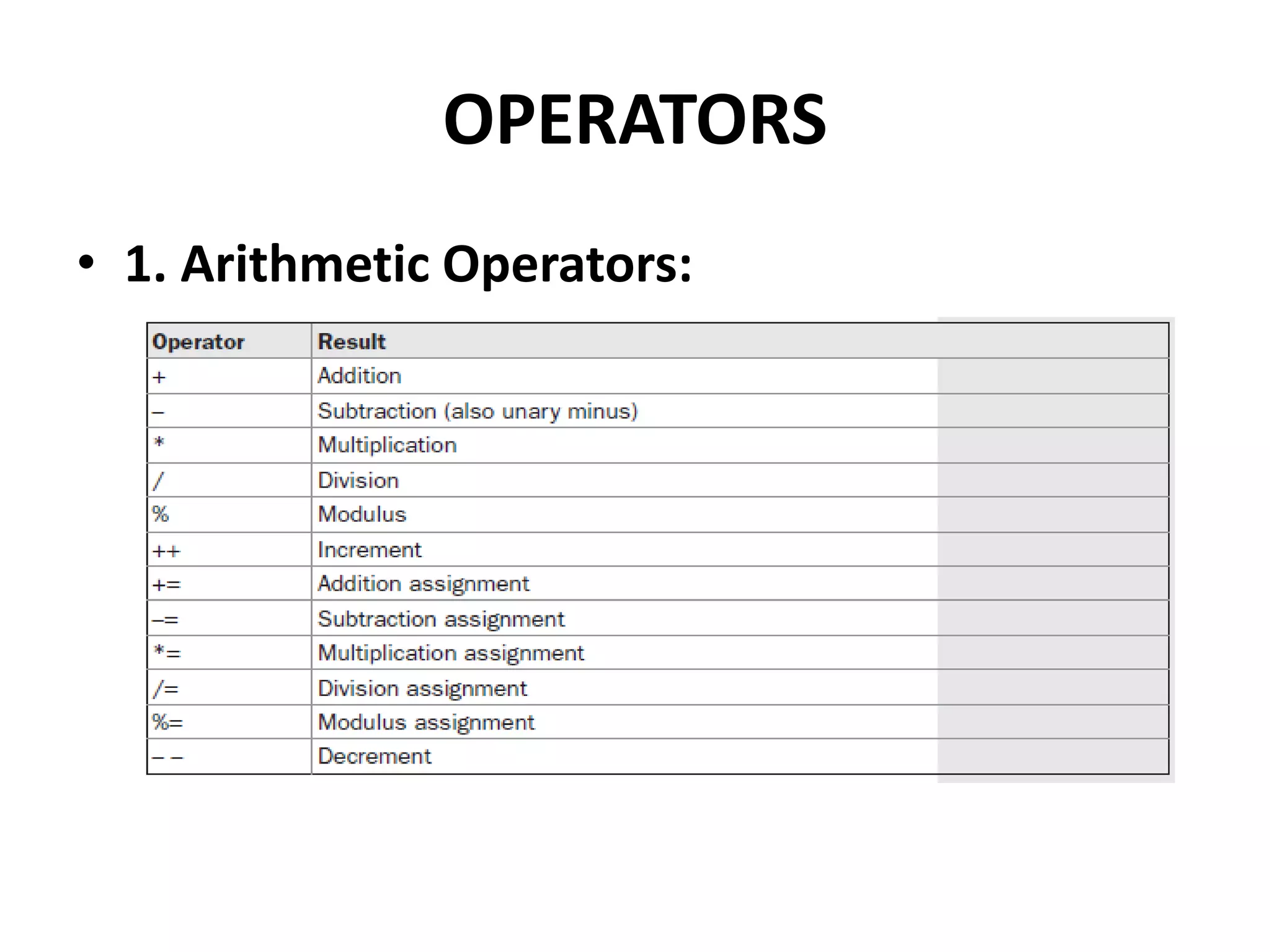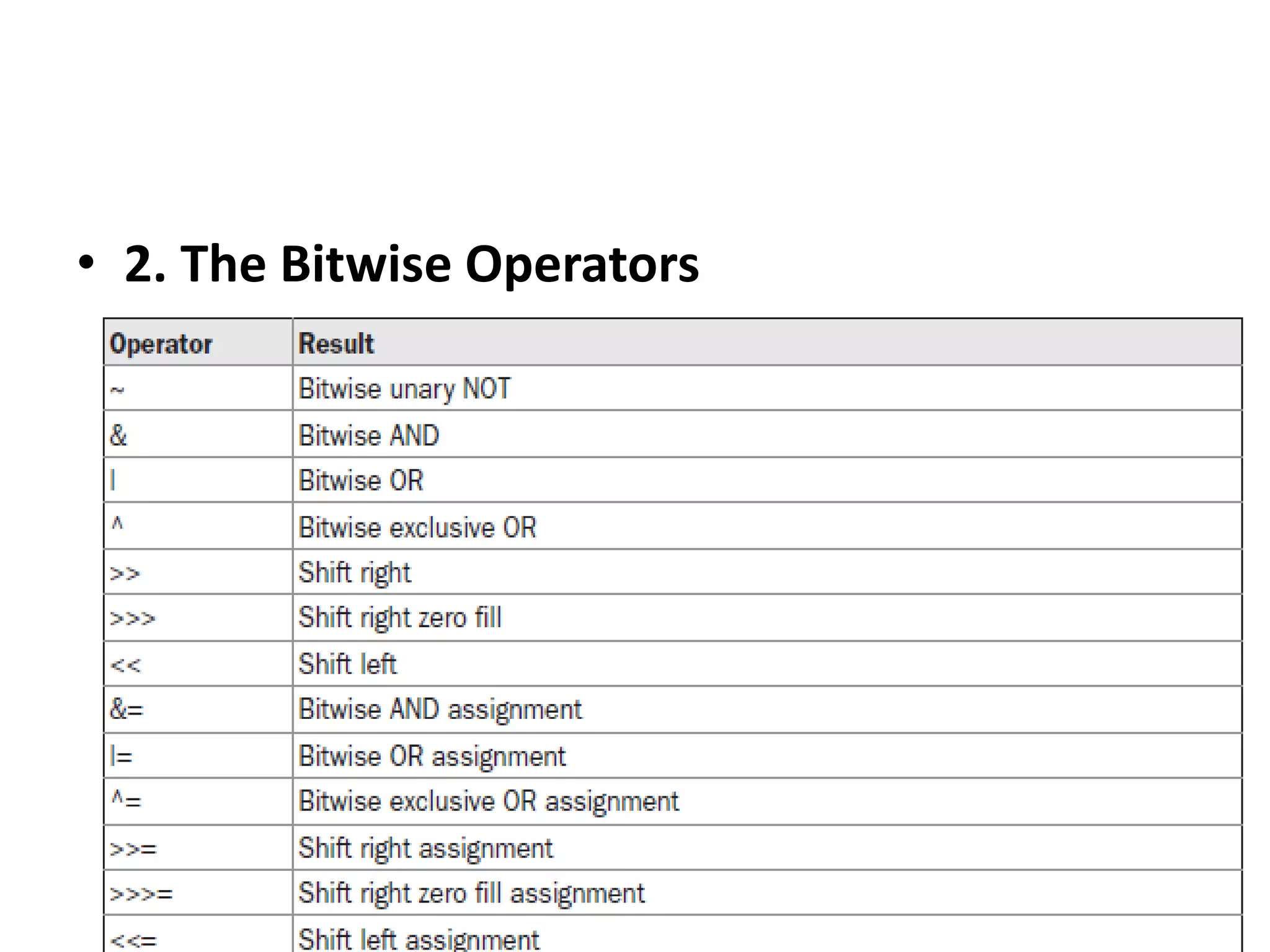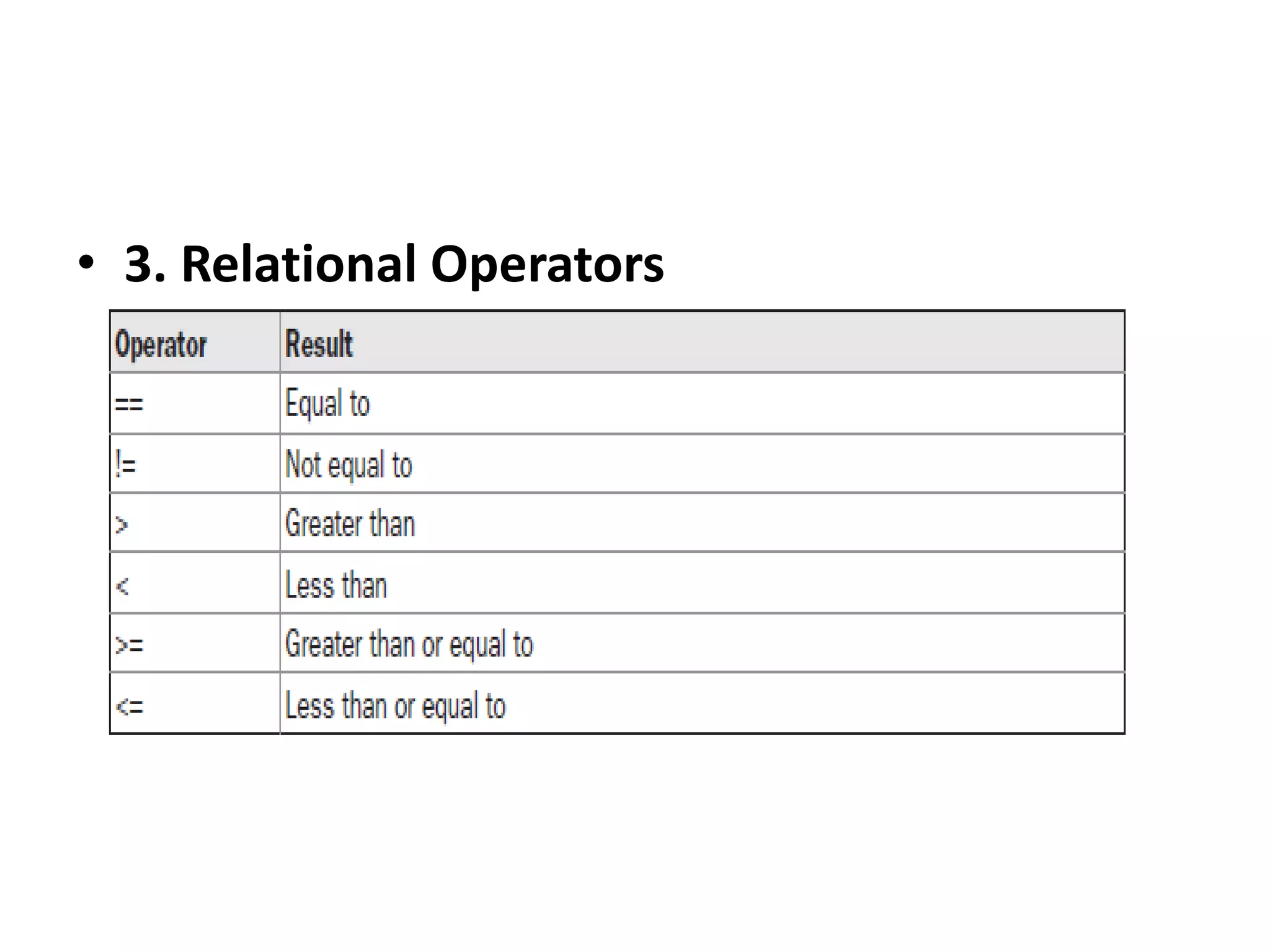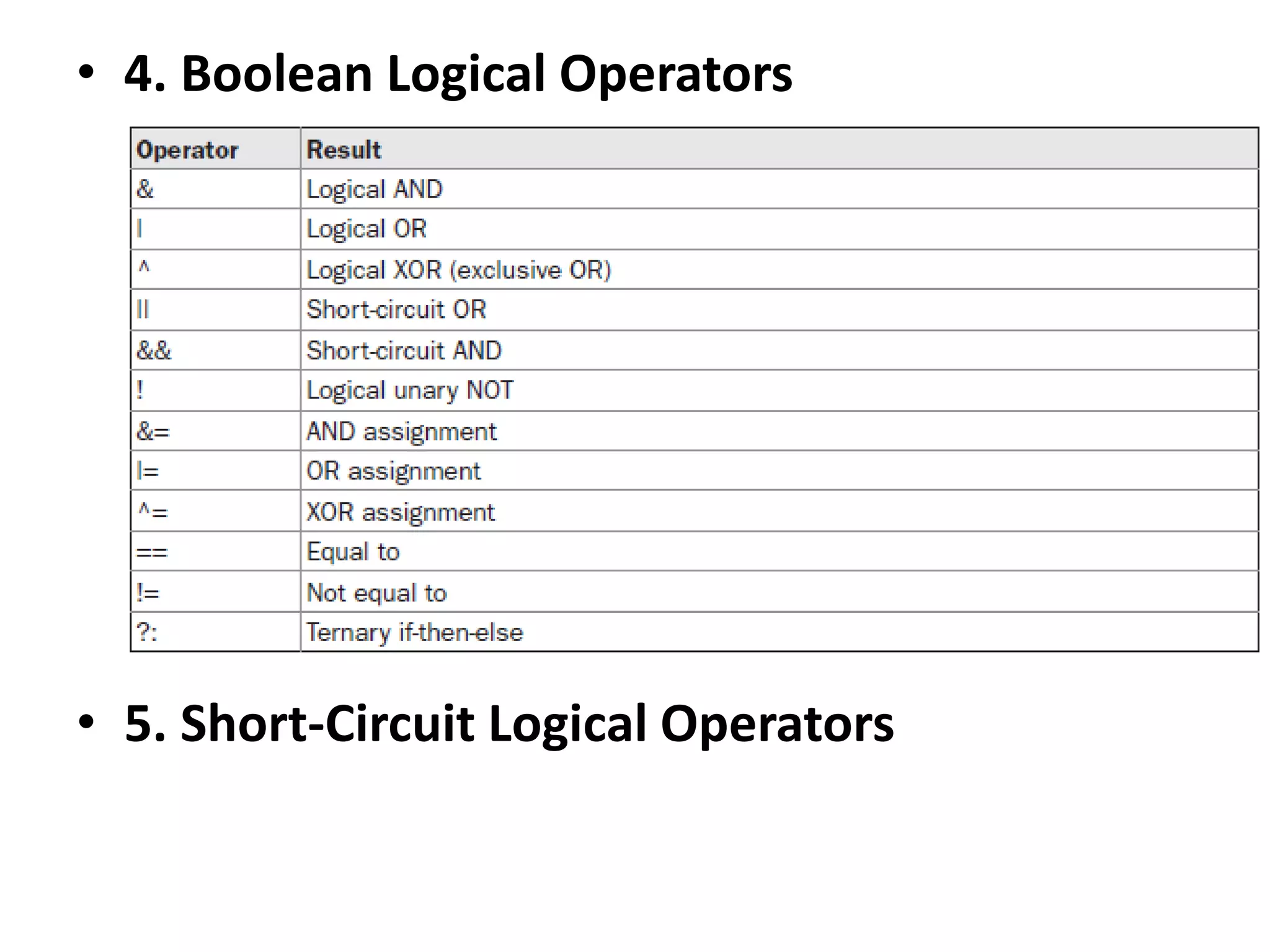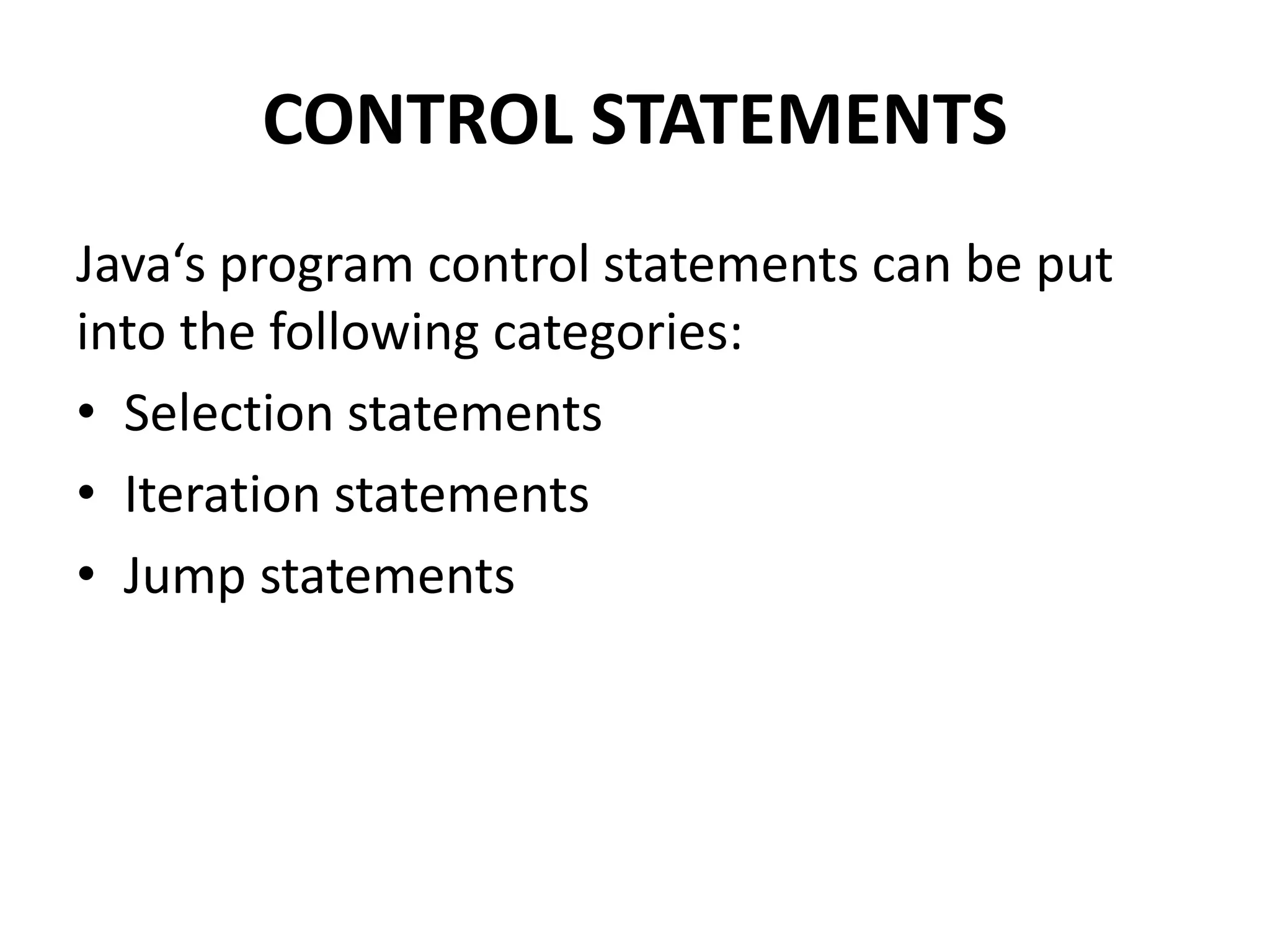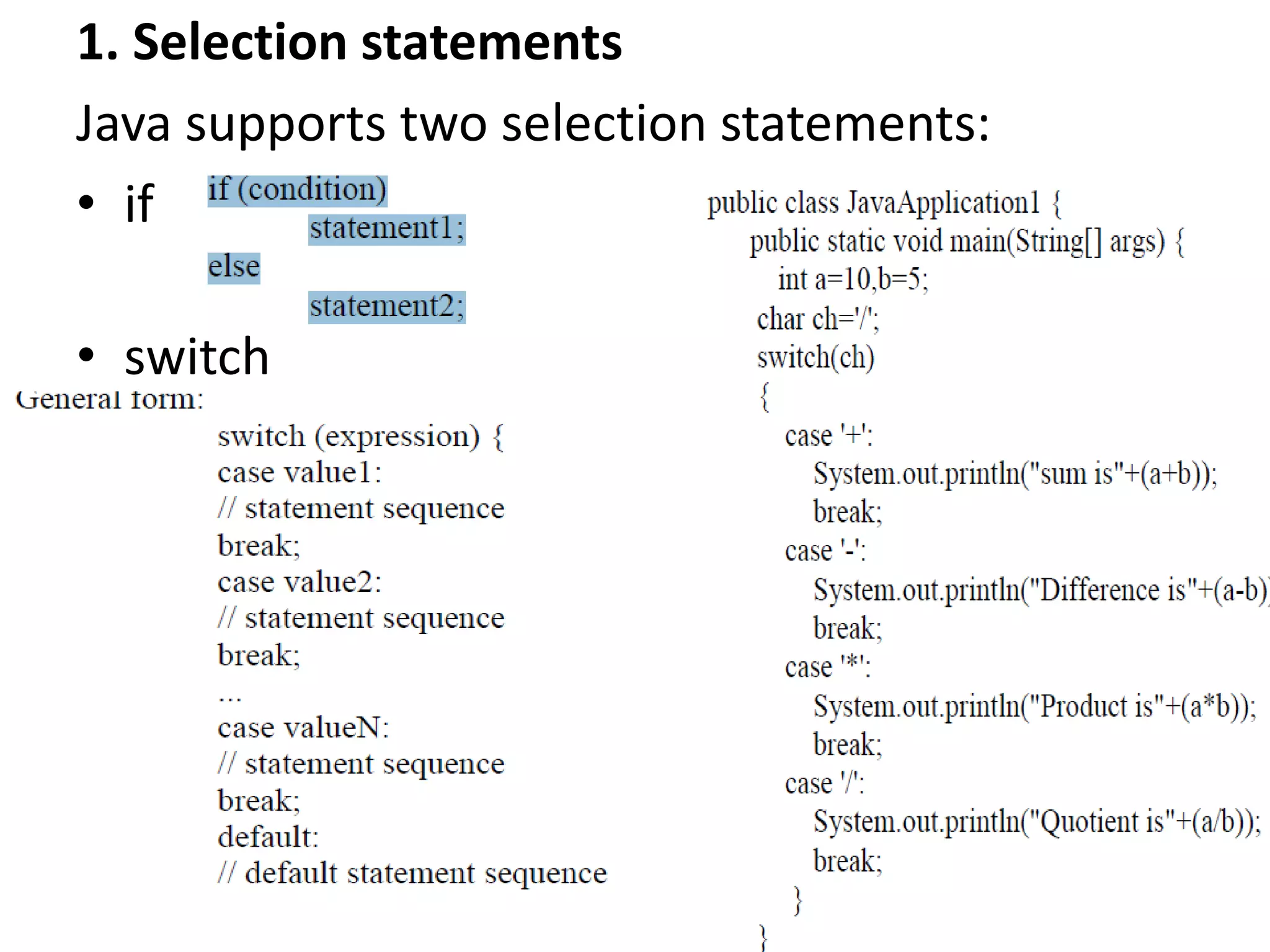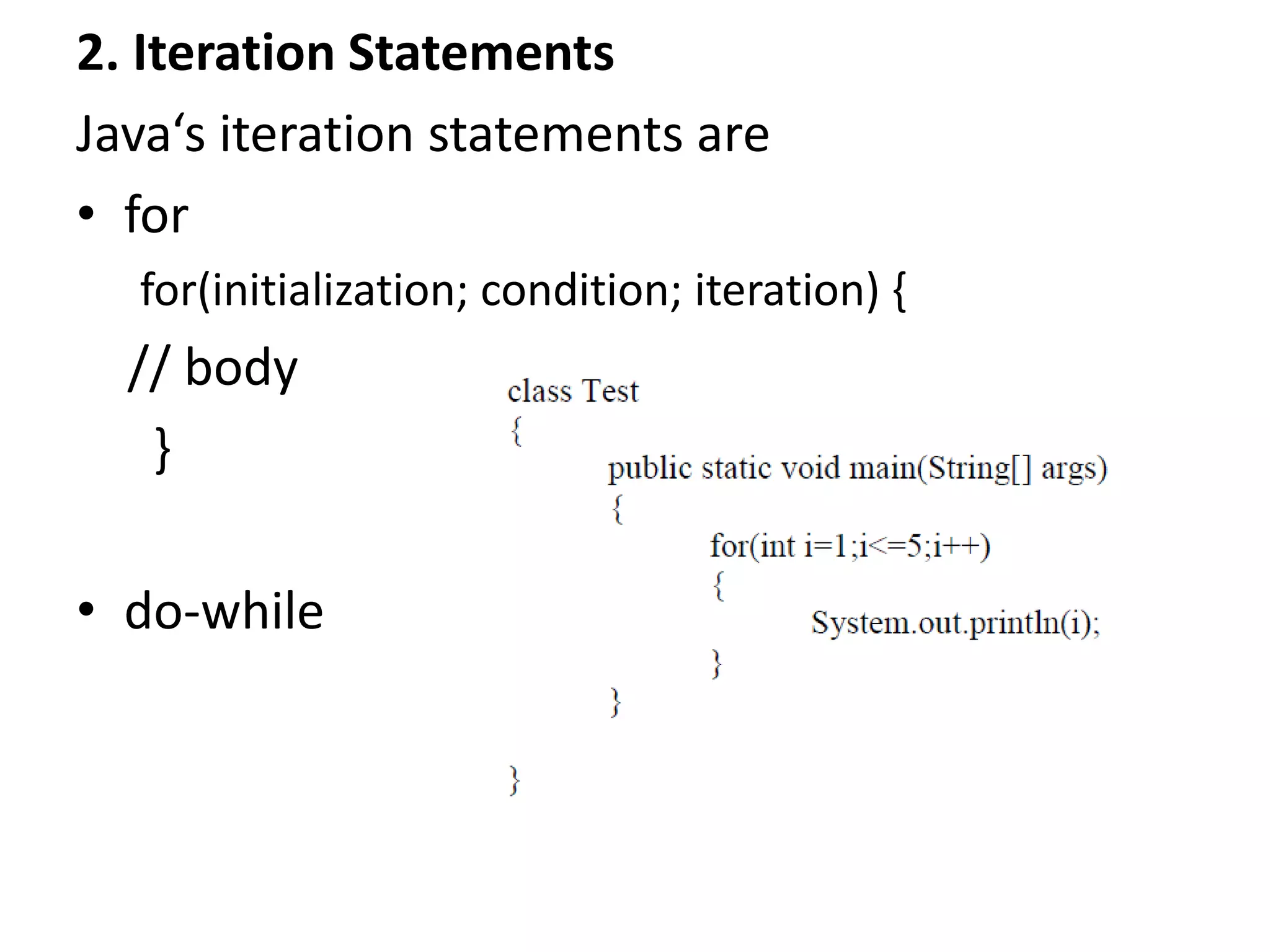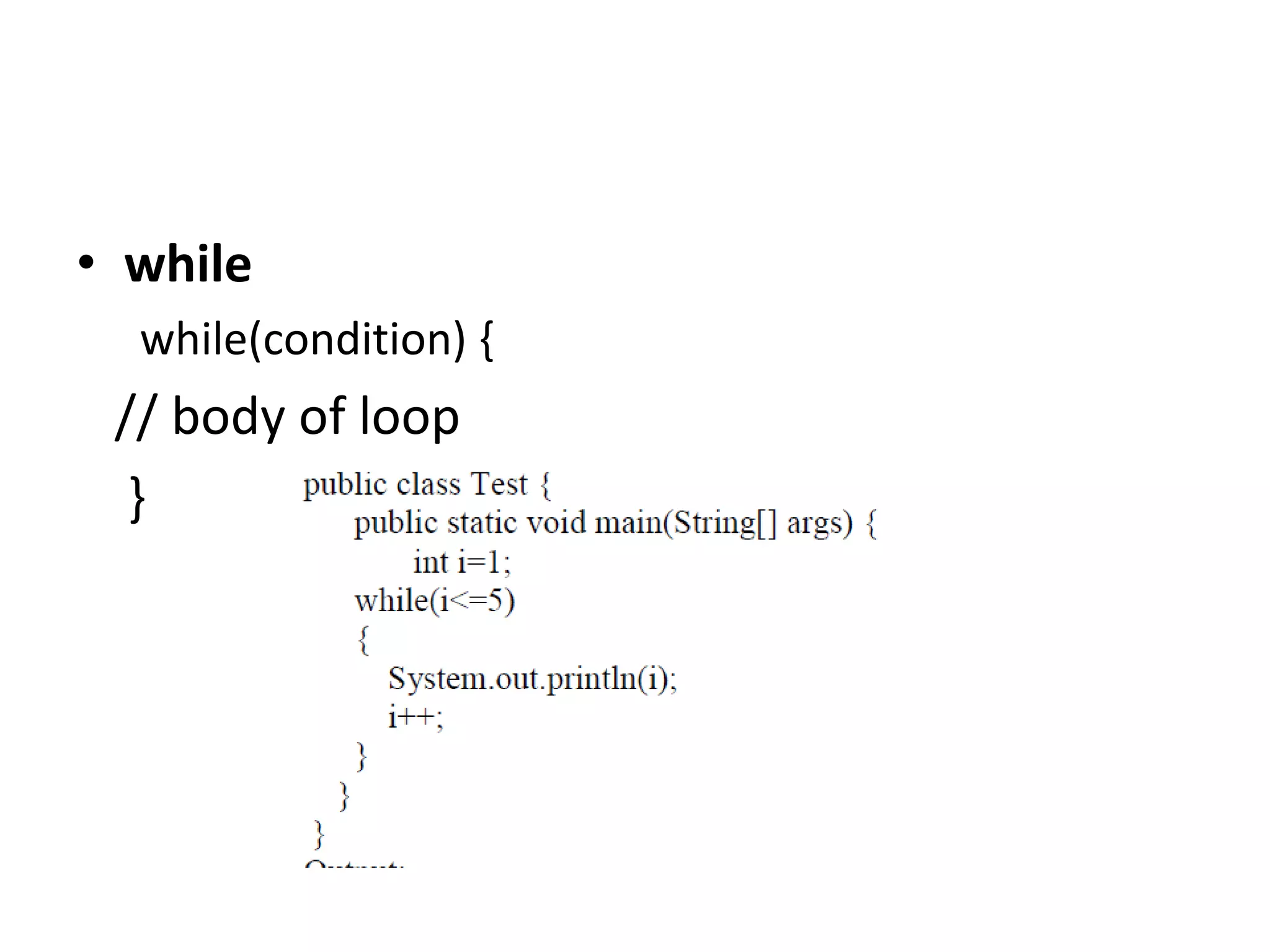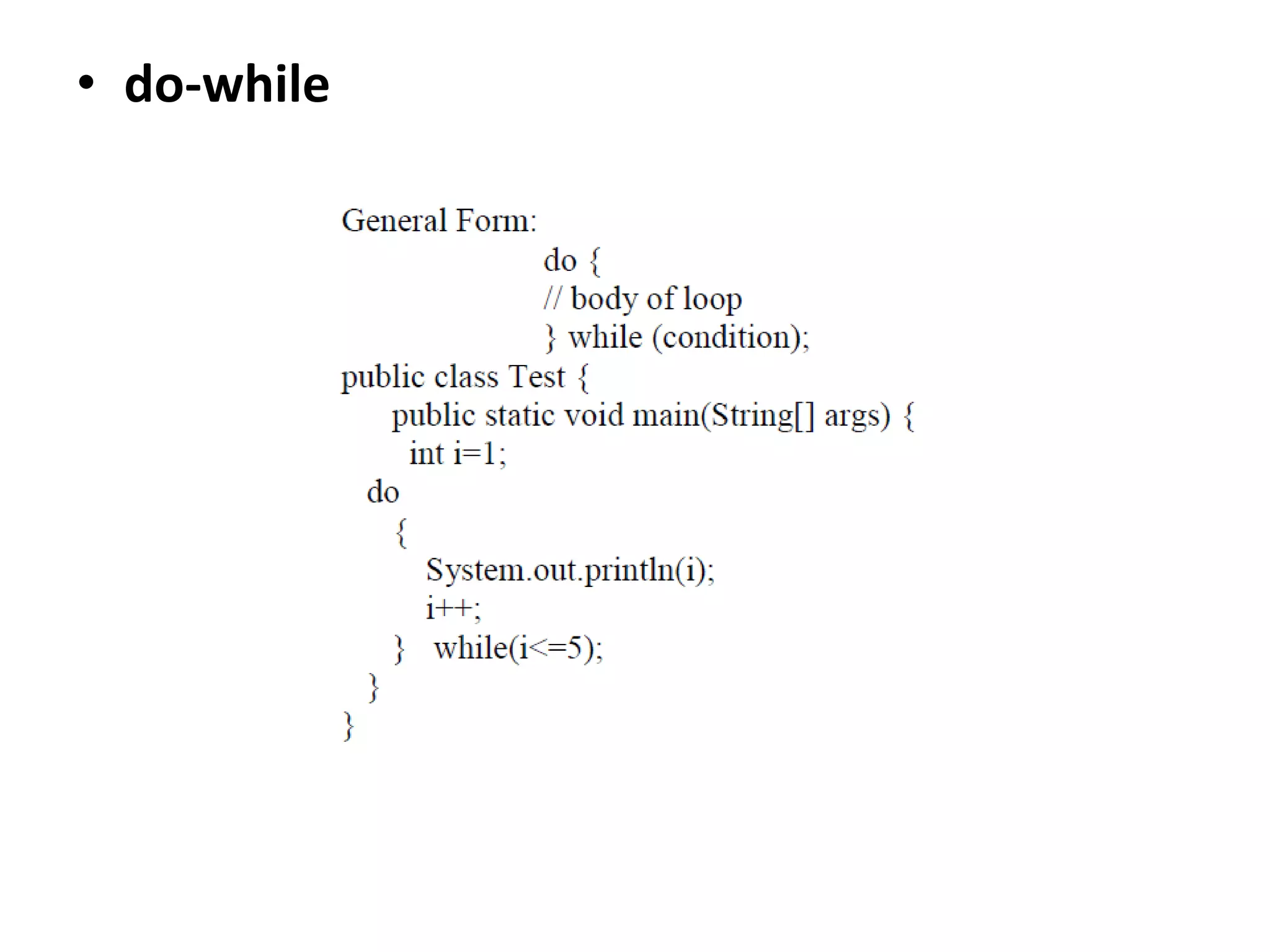This document provides an introduction to object-oriented programming concepts in Java, including classes, objects, inheritance, polymorphism, abstraction, and encapsulation. It then discusses the Java programming environment, fundamental programming structures in Java like data types, variables, operators, control flow statements, and arrays. Key characteristics of the Java language are also summarized.
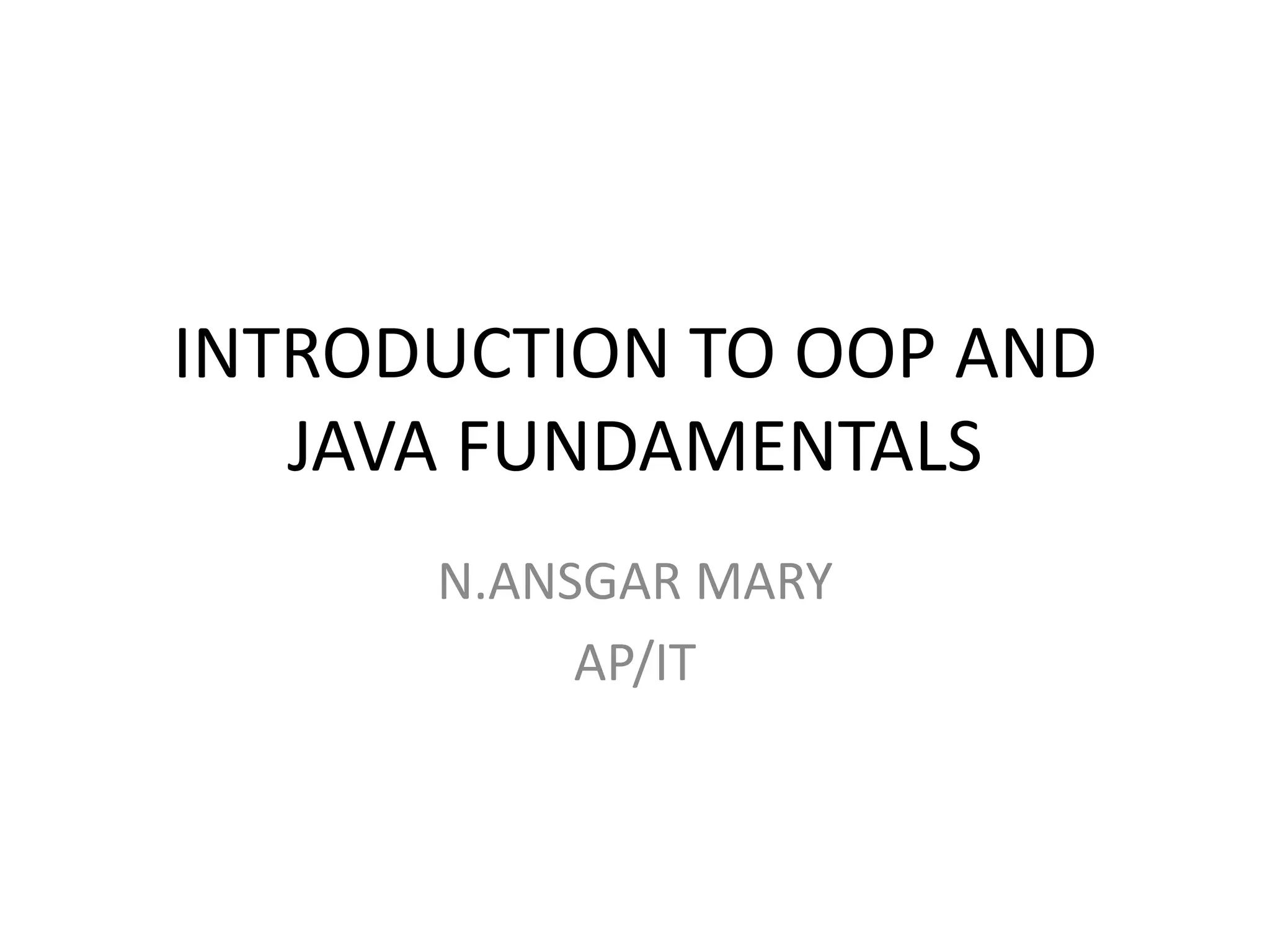



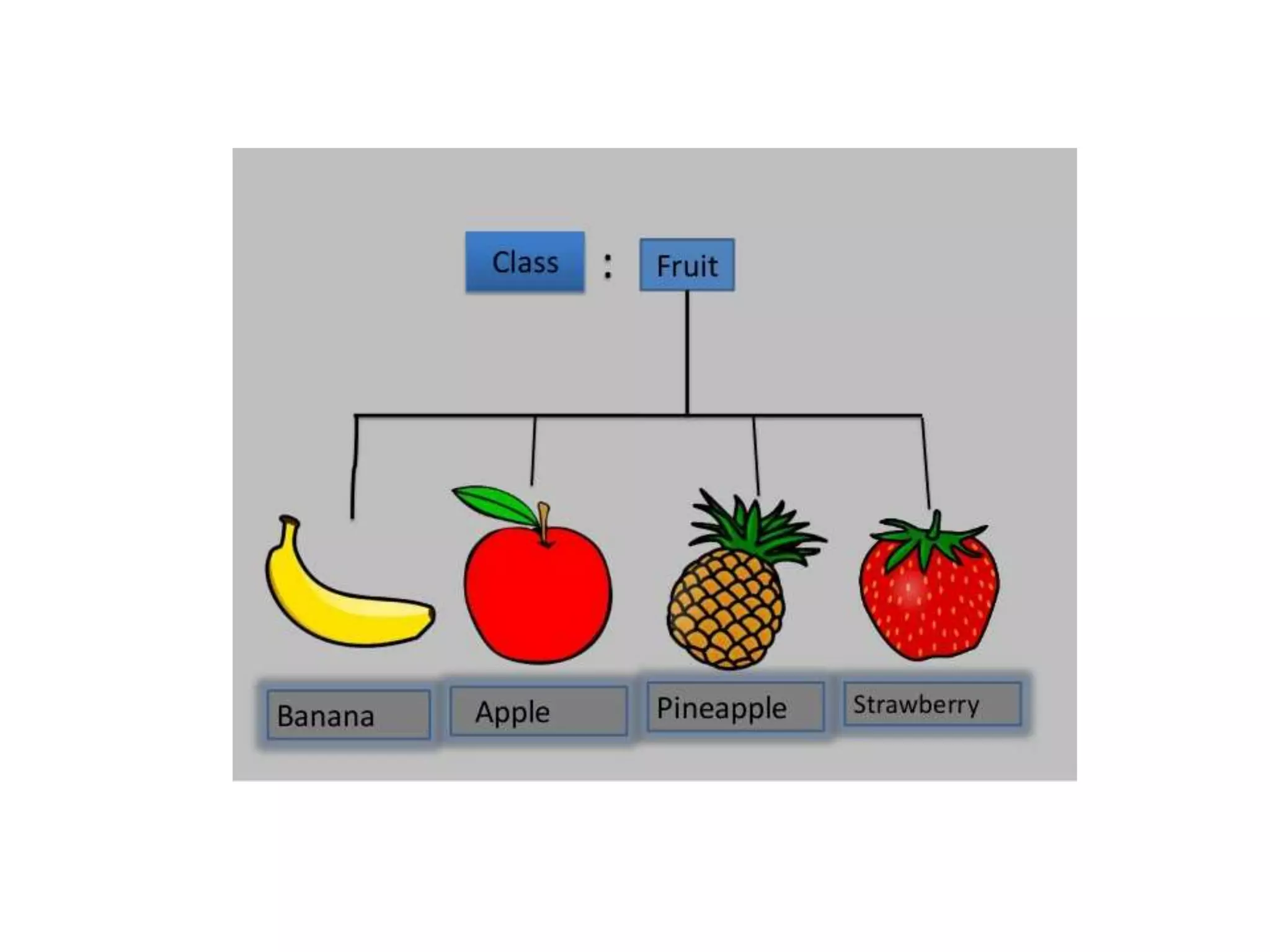
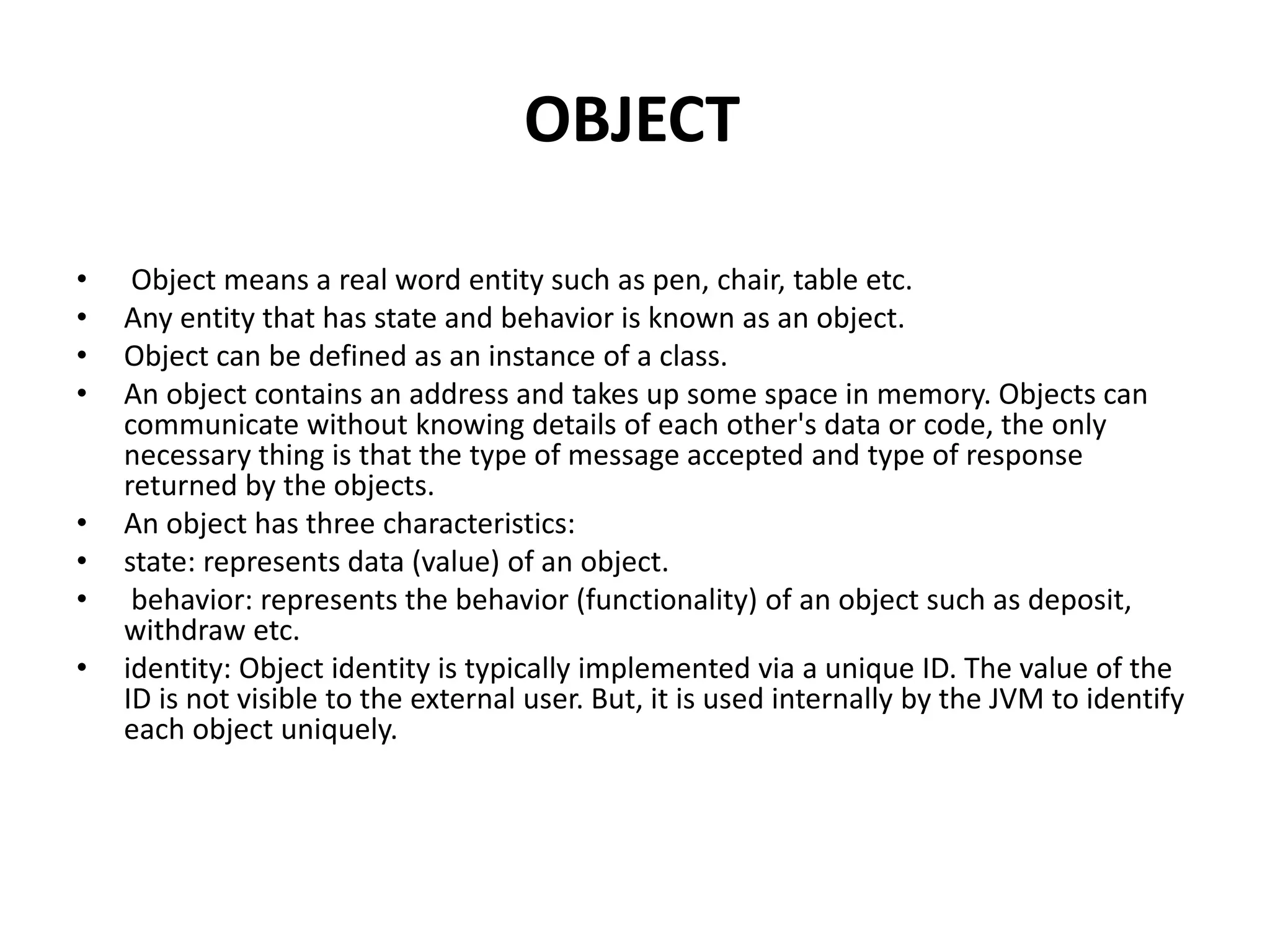
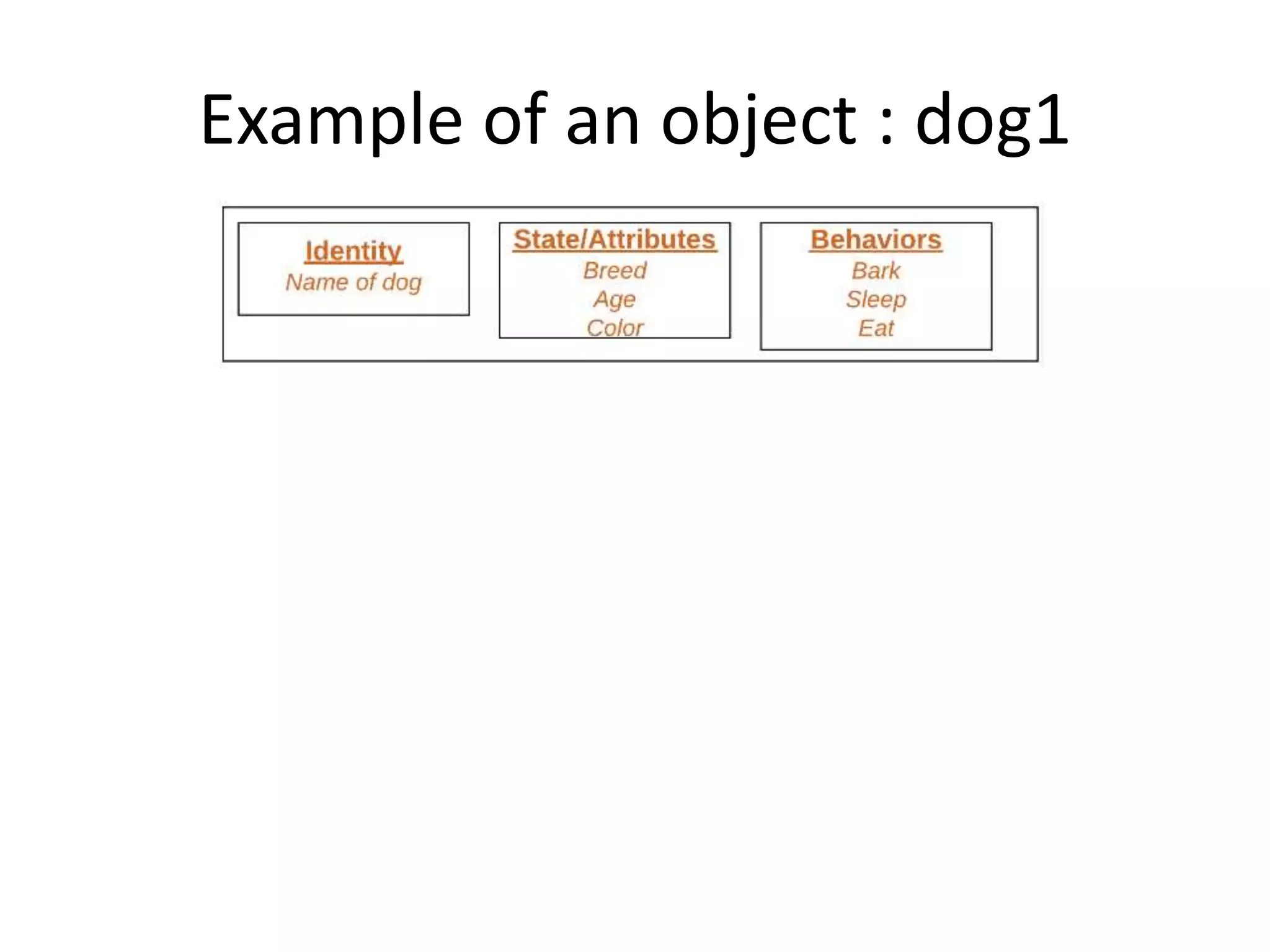
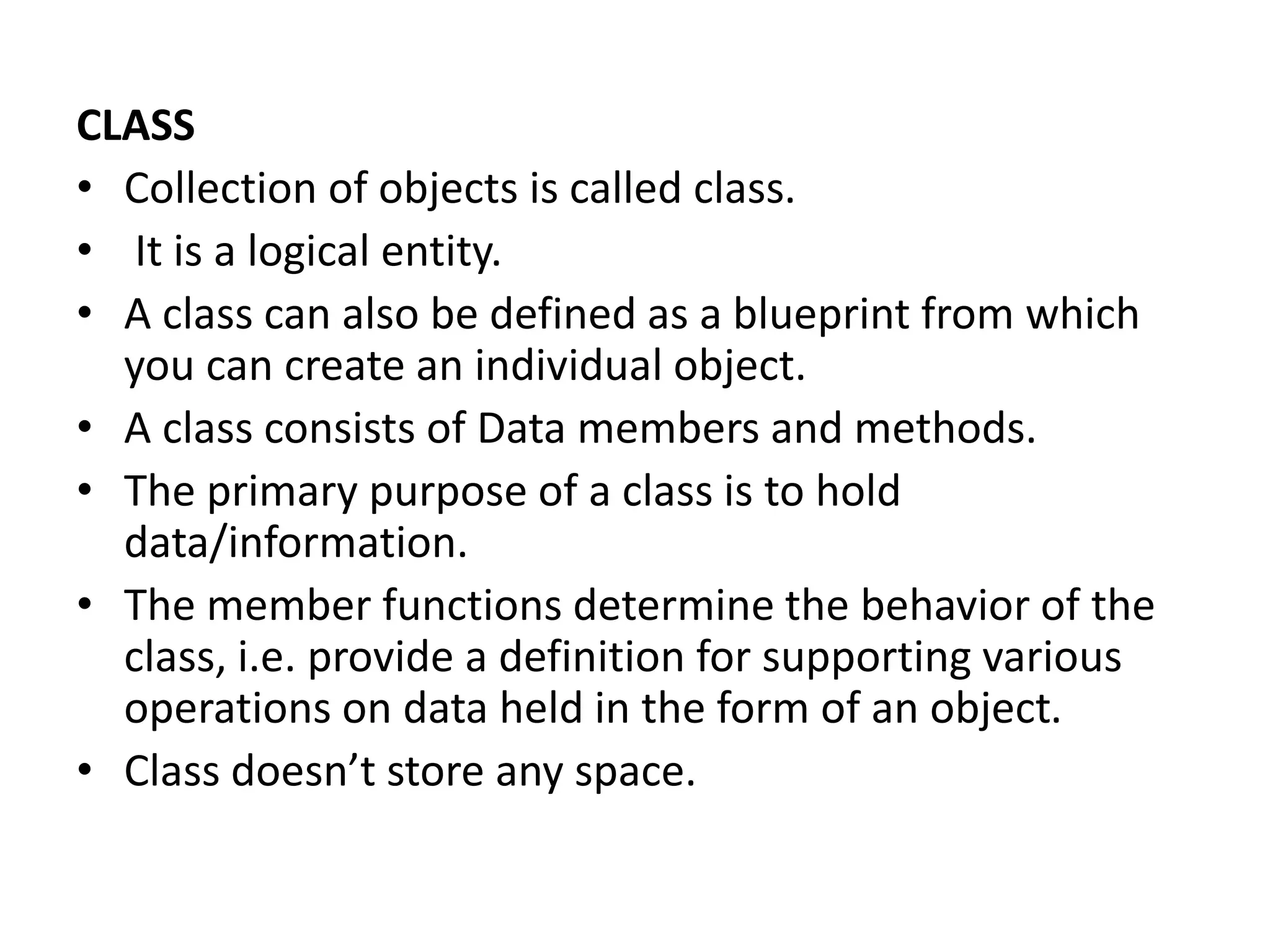
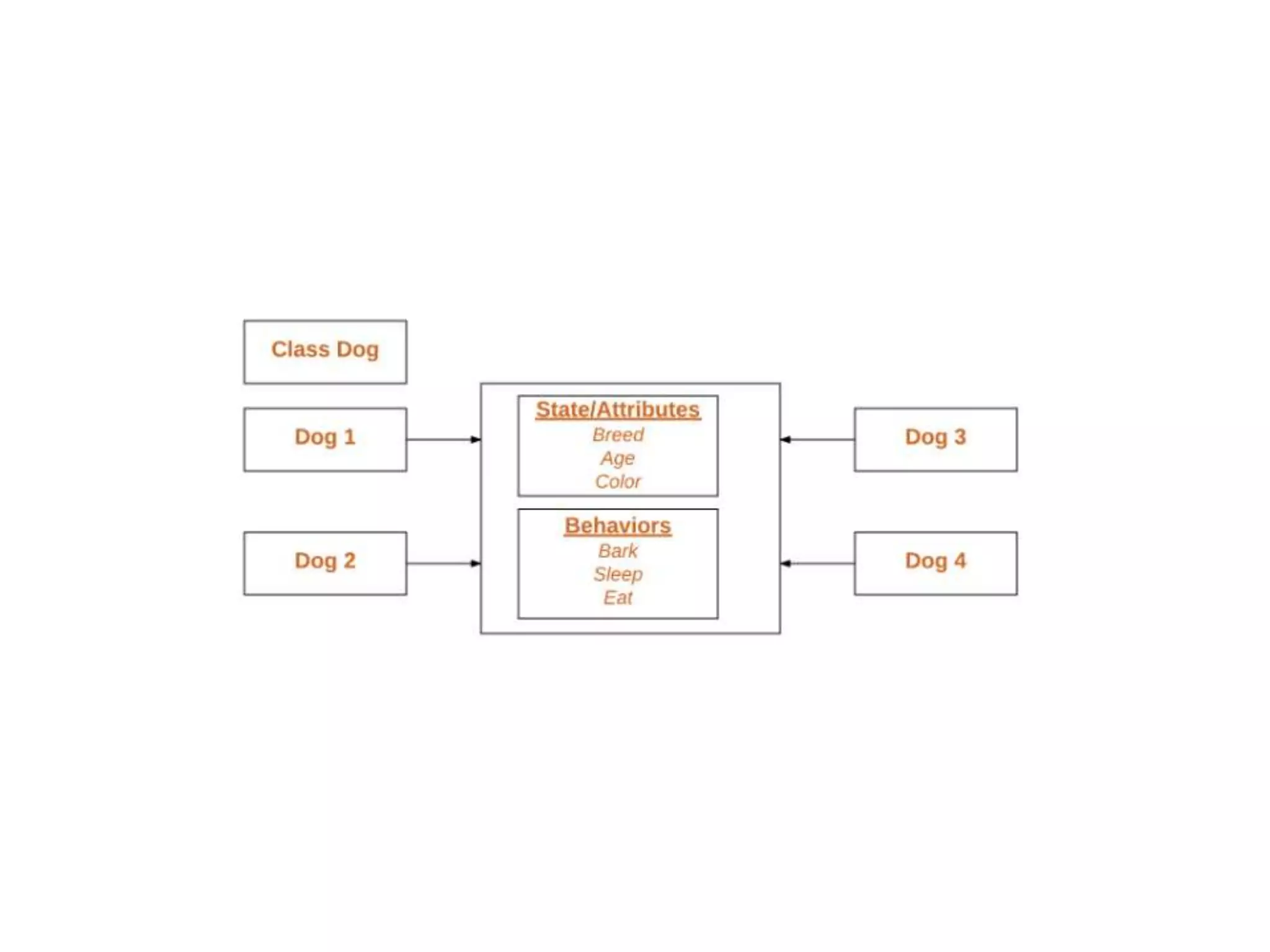
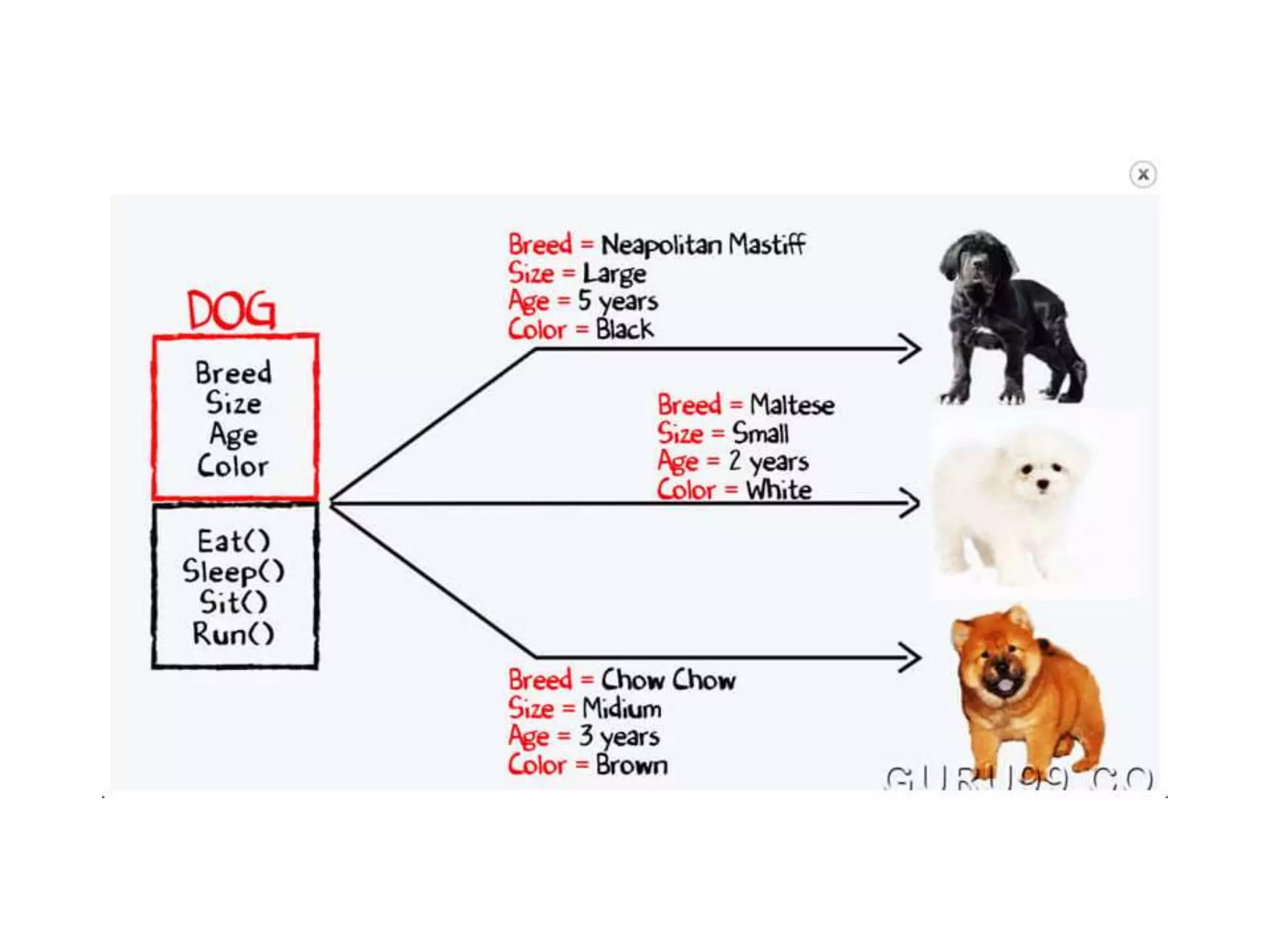
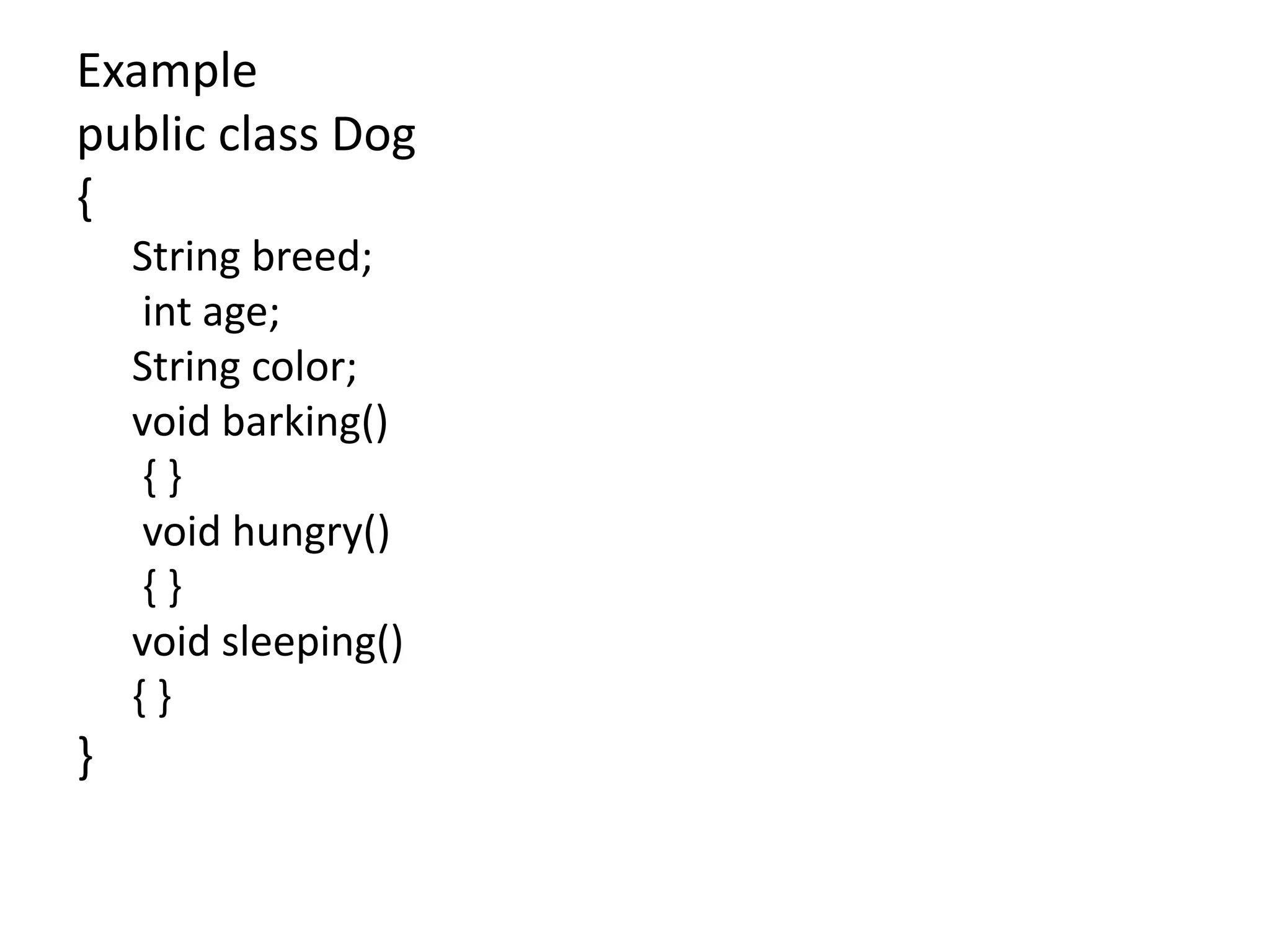
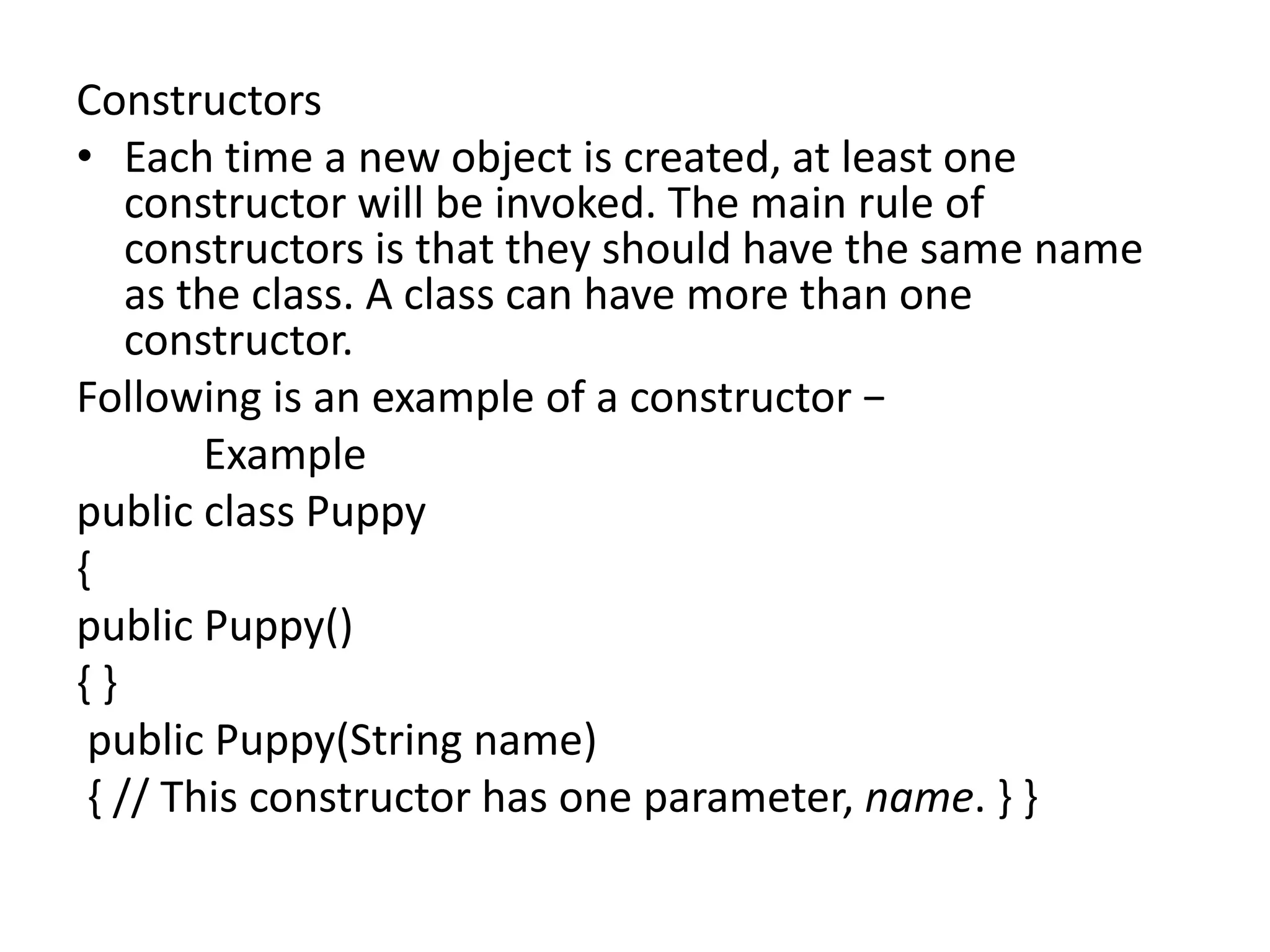
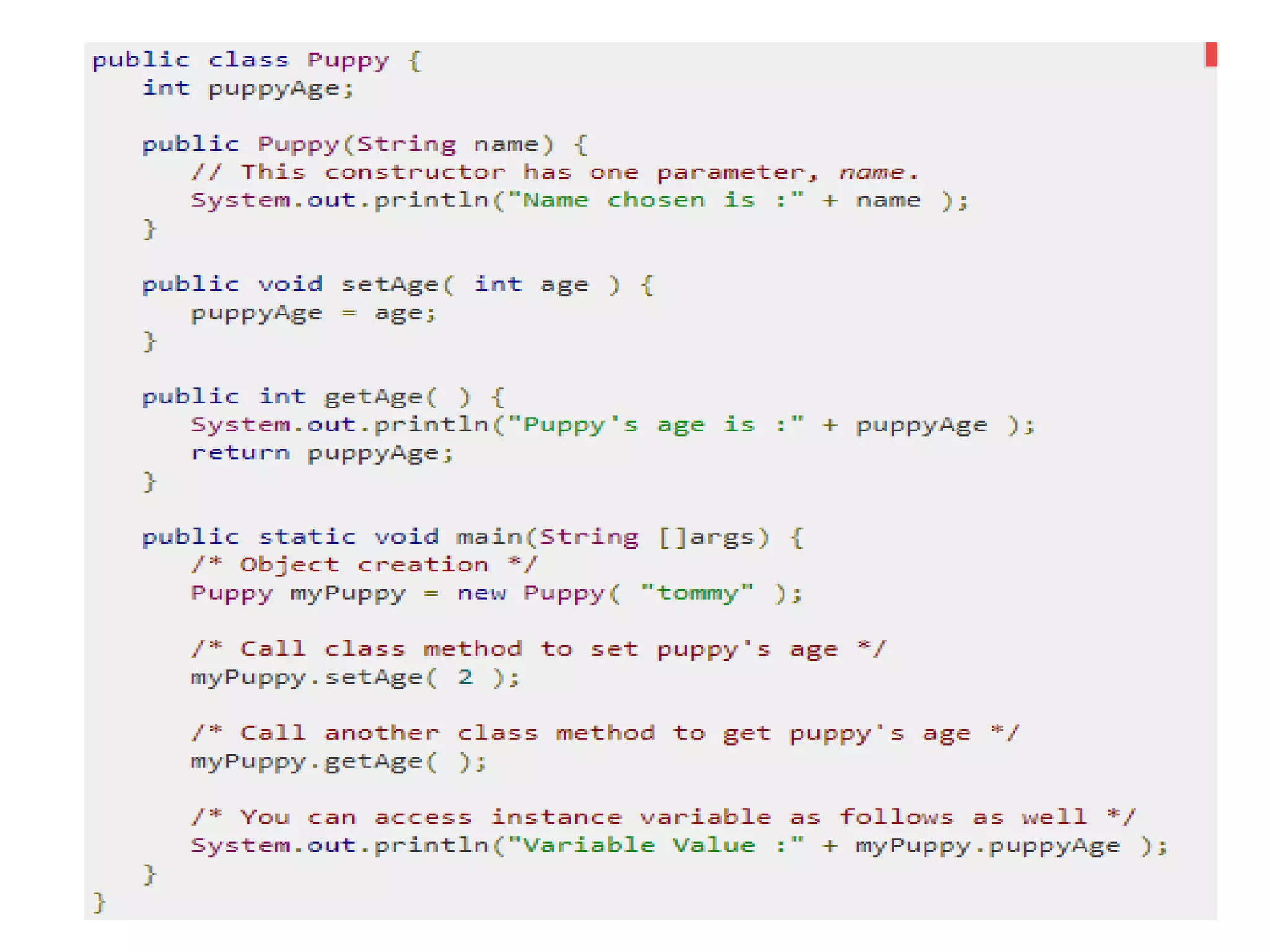
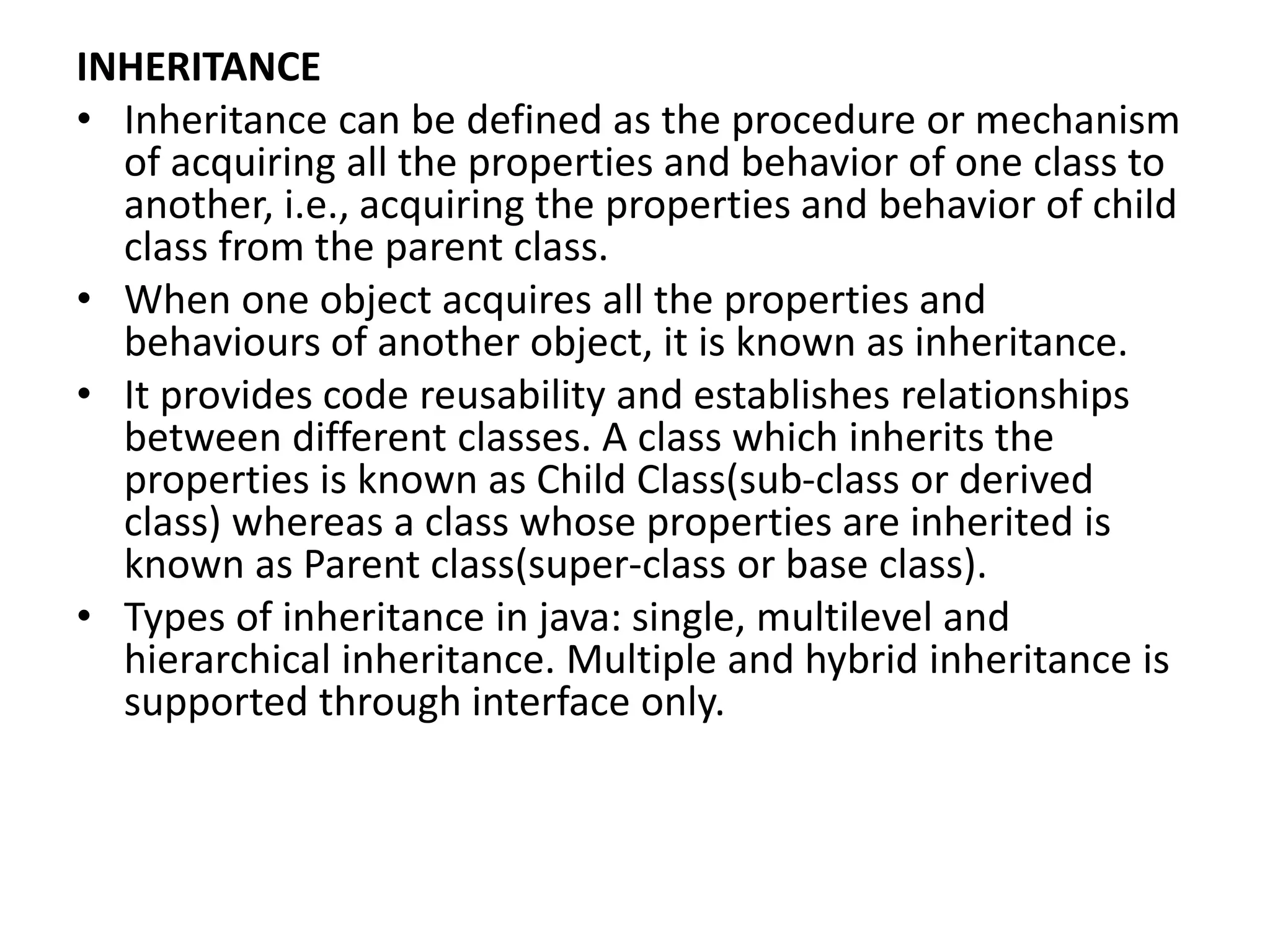
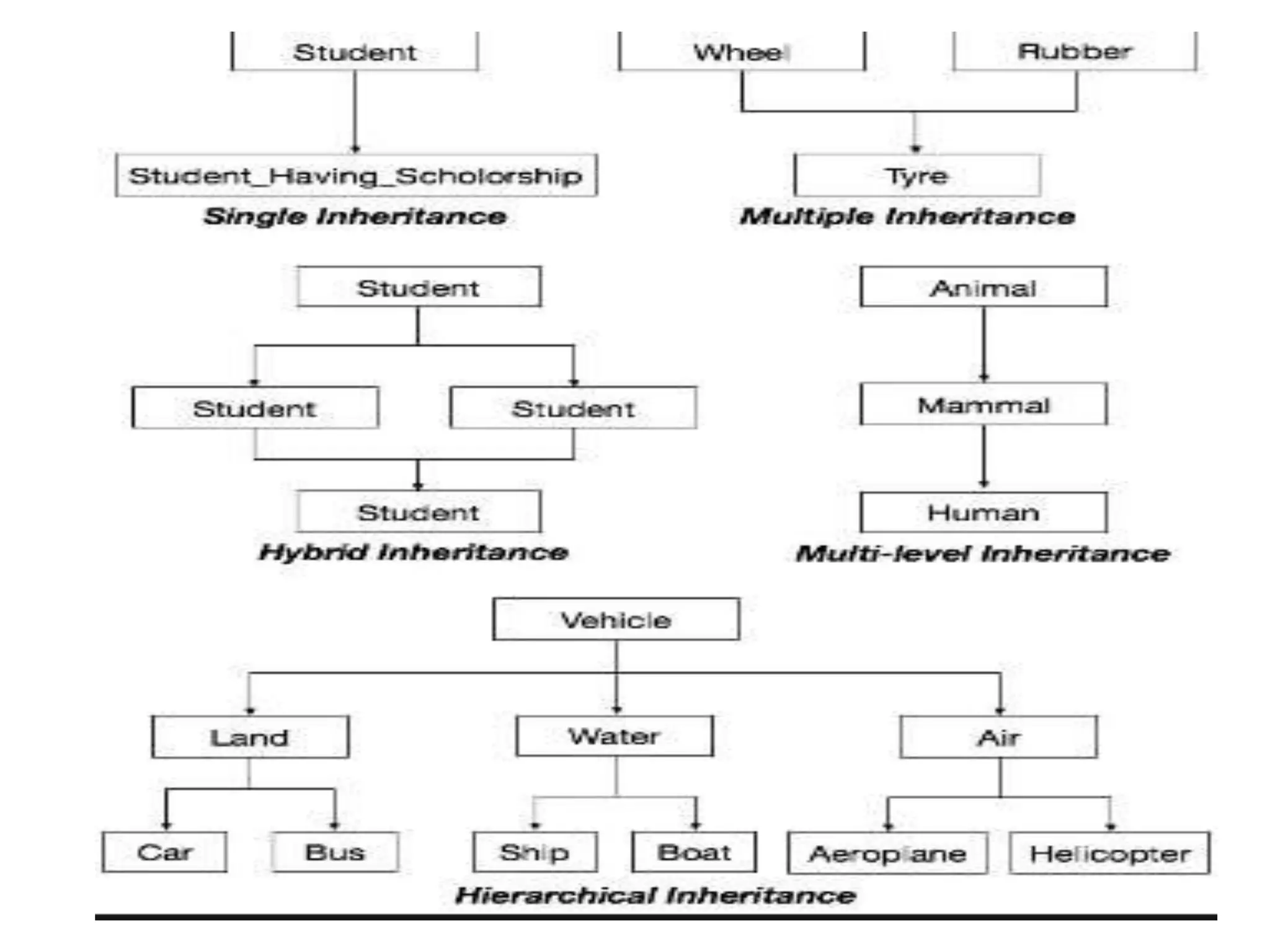
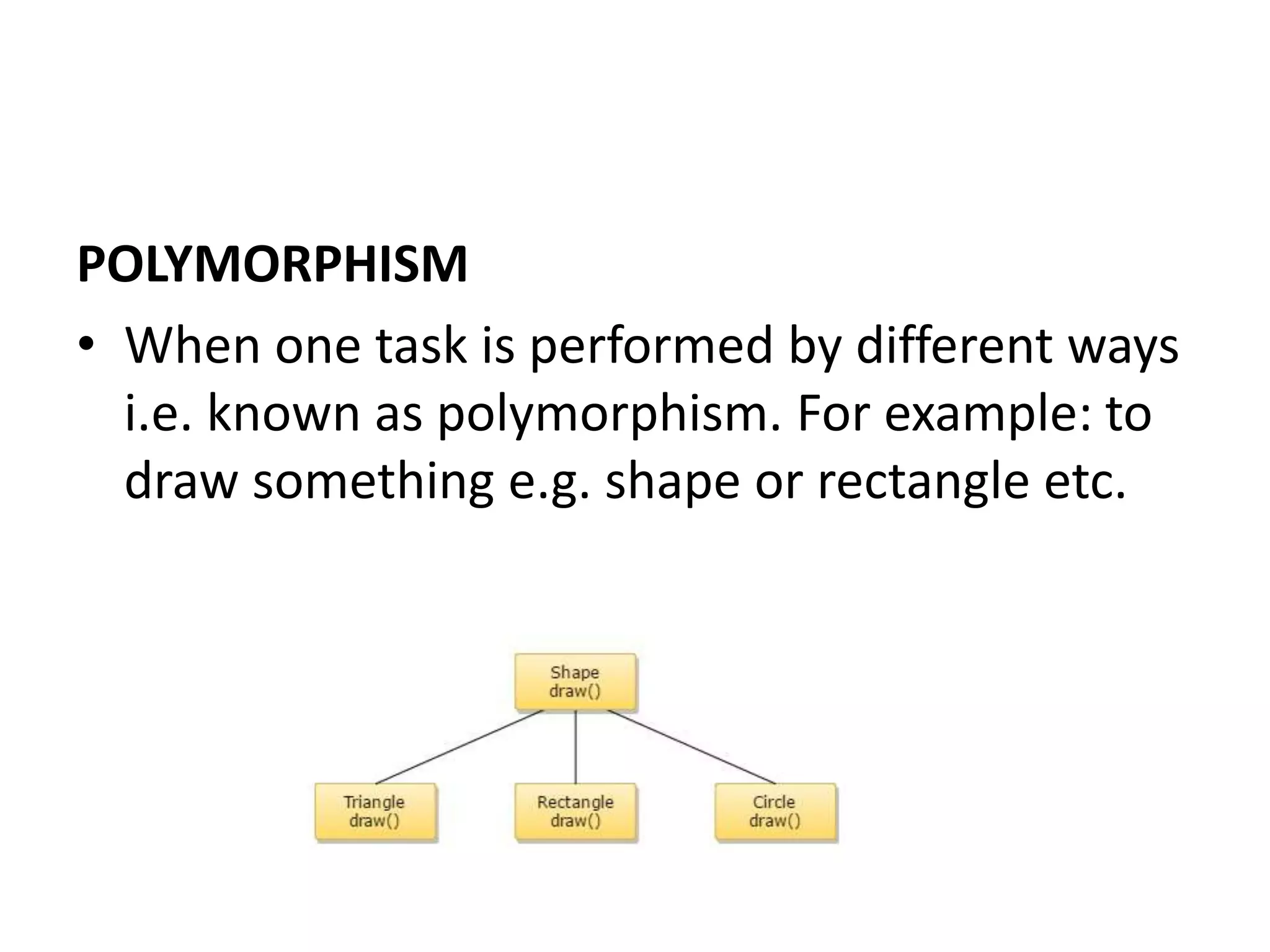
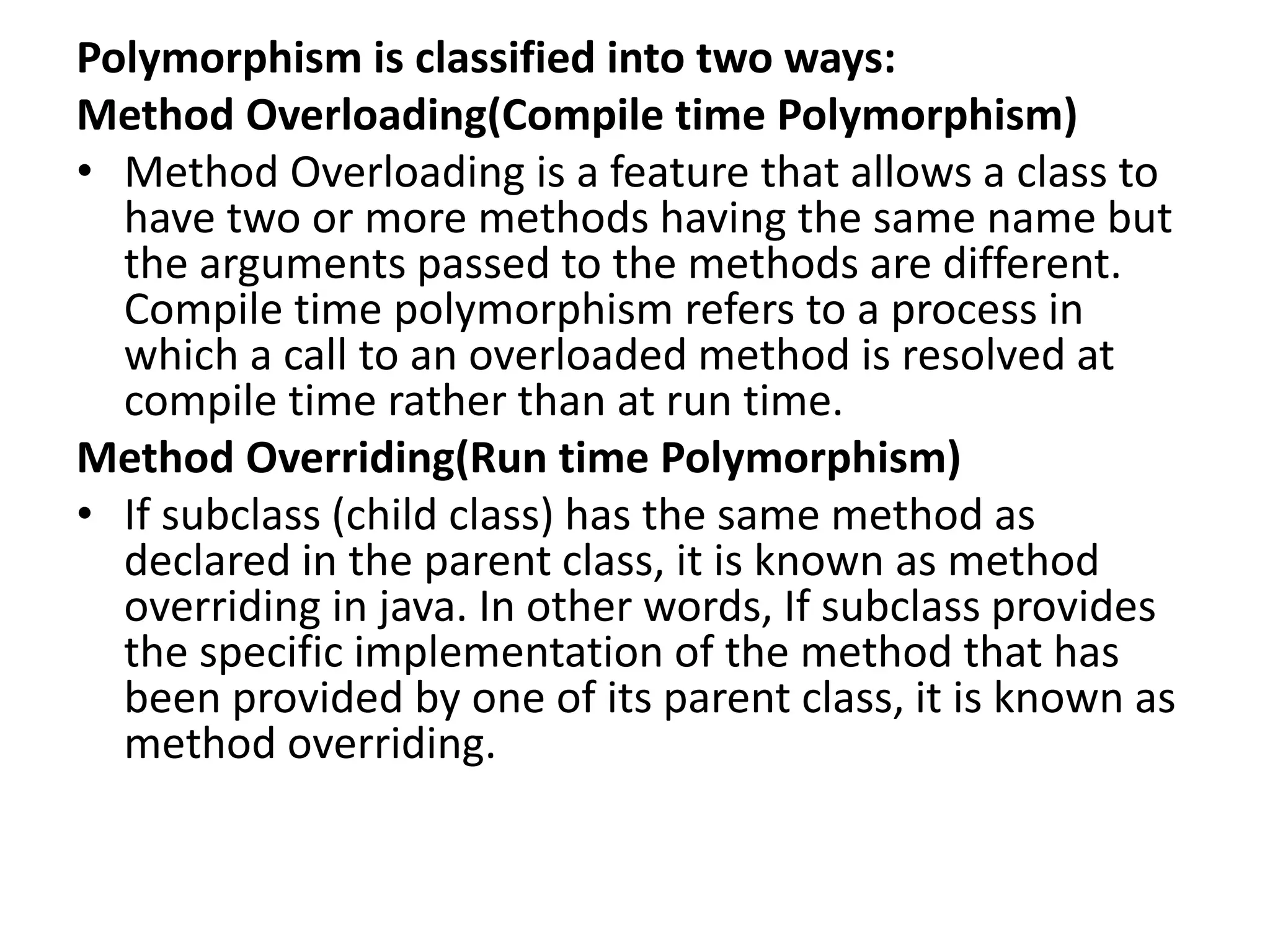
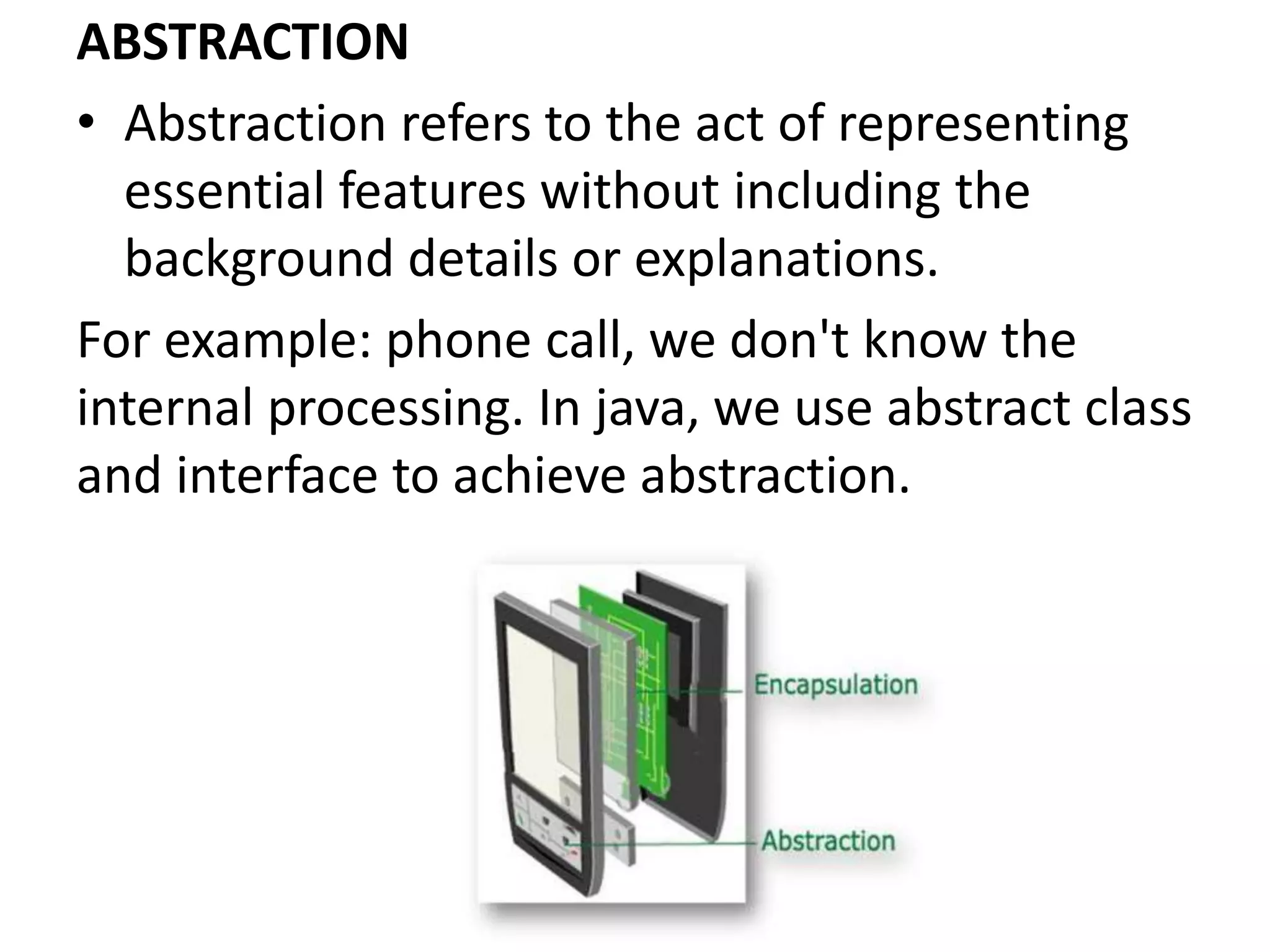
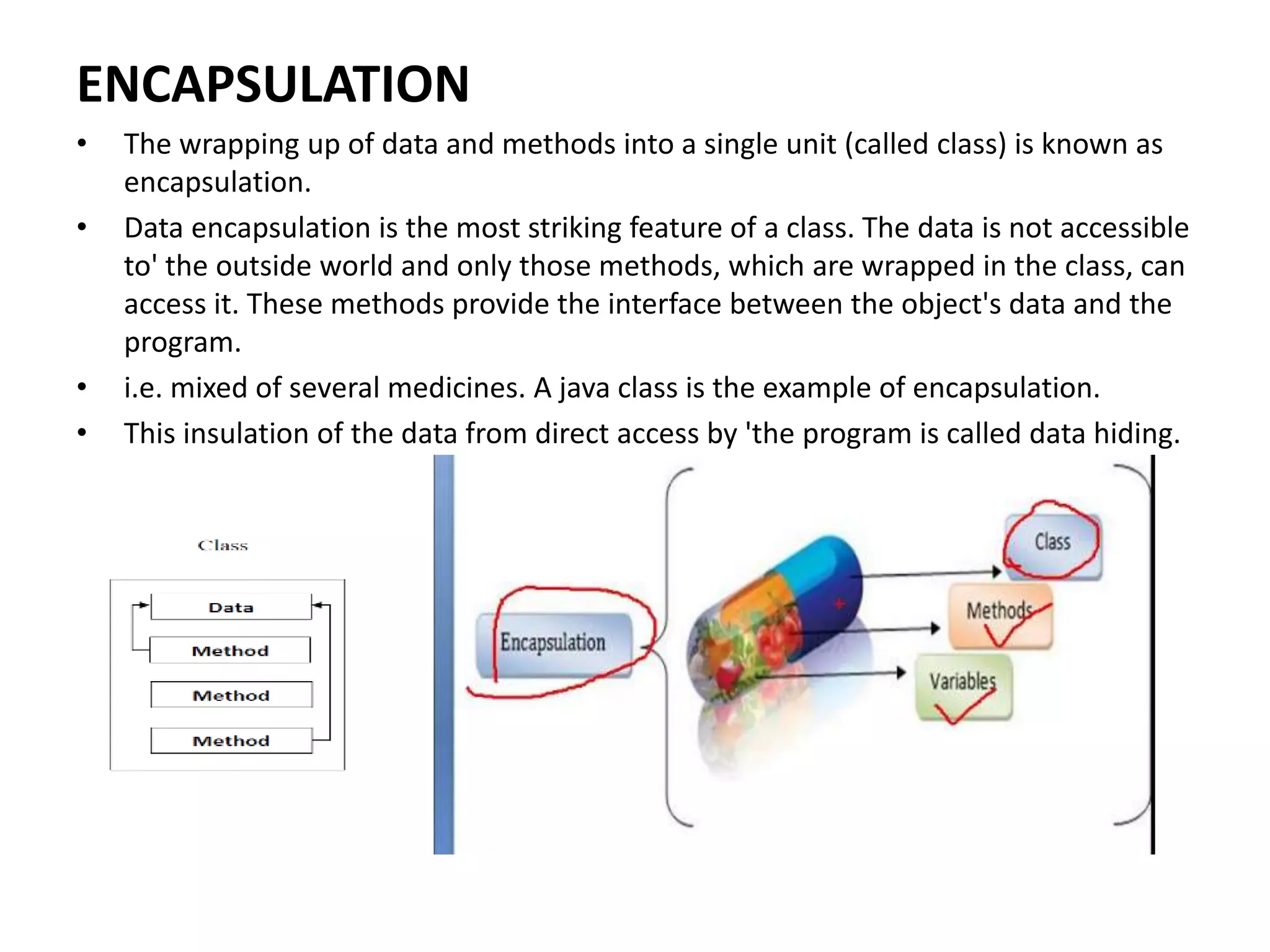
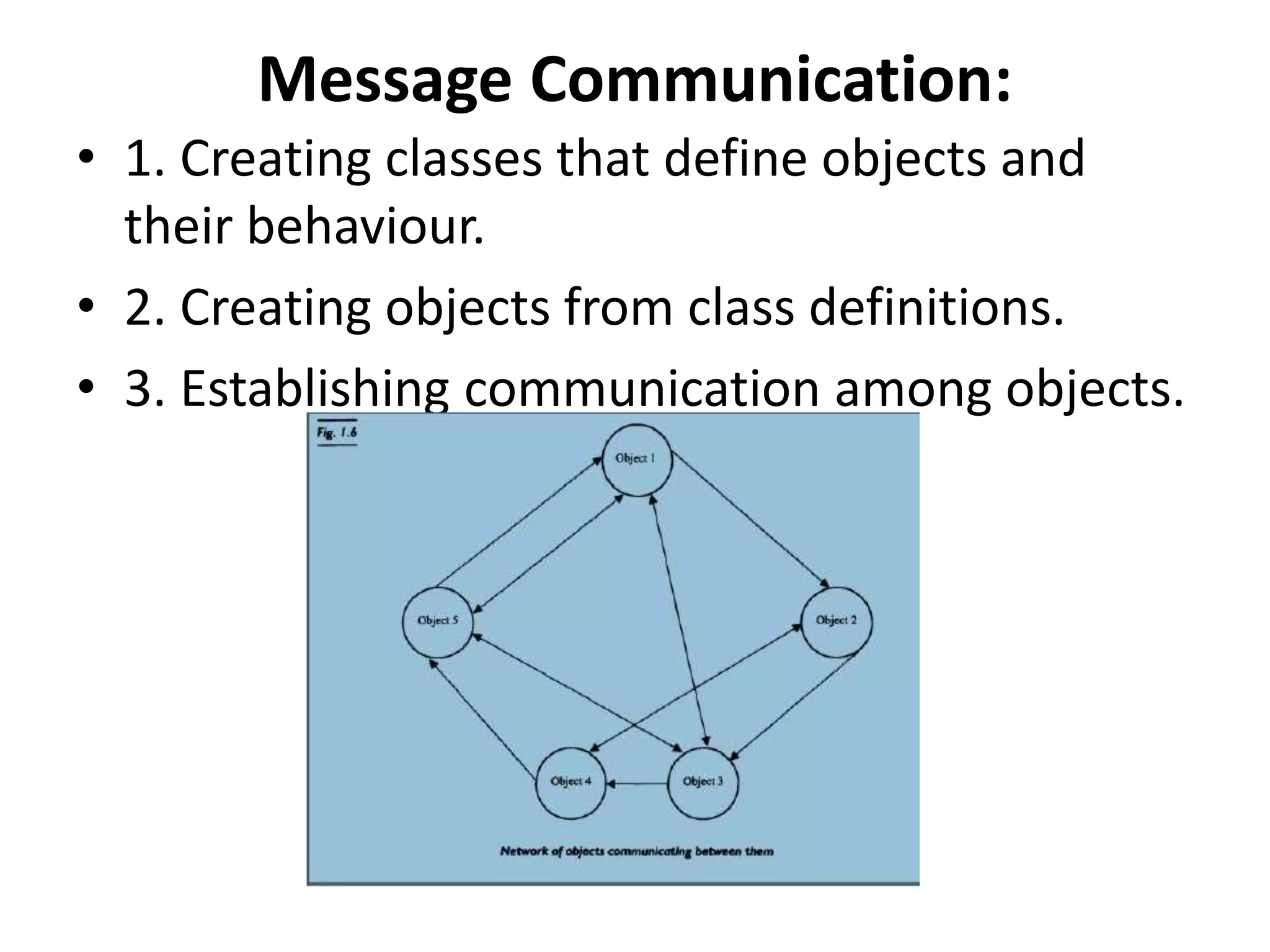
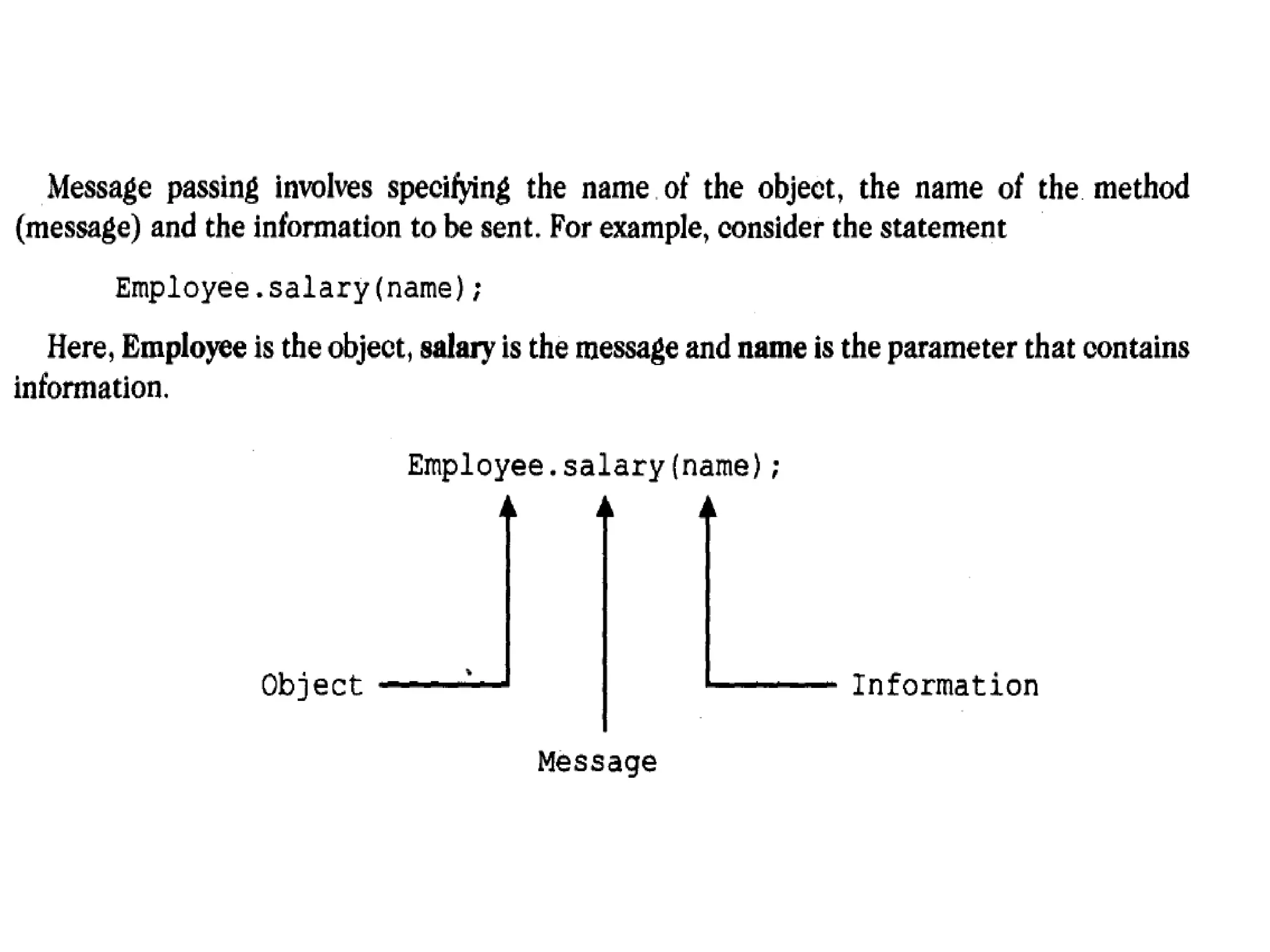
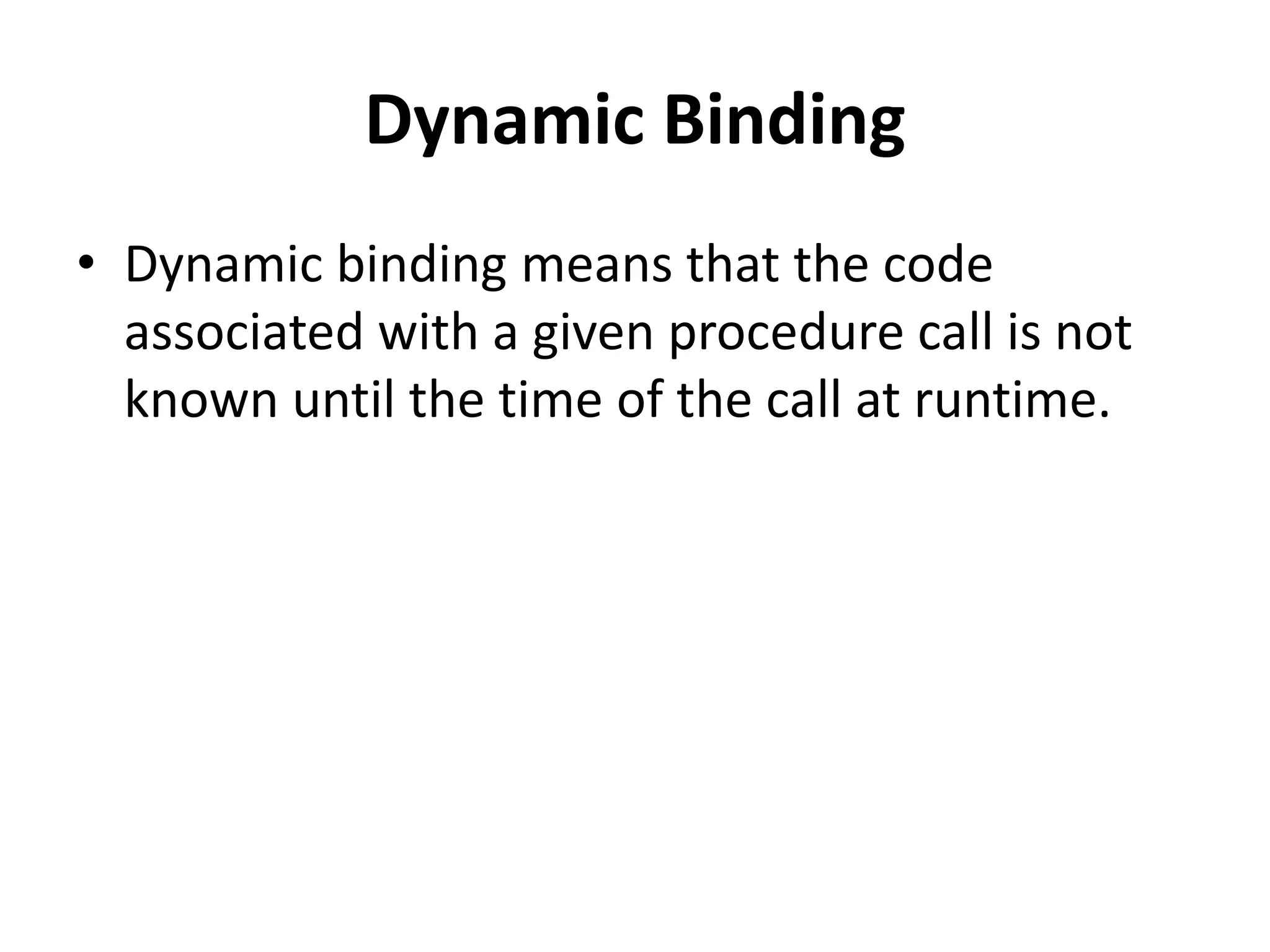

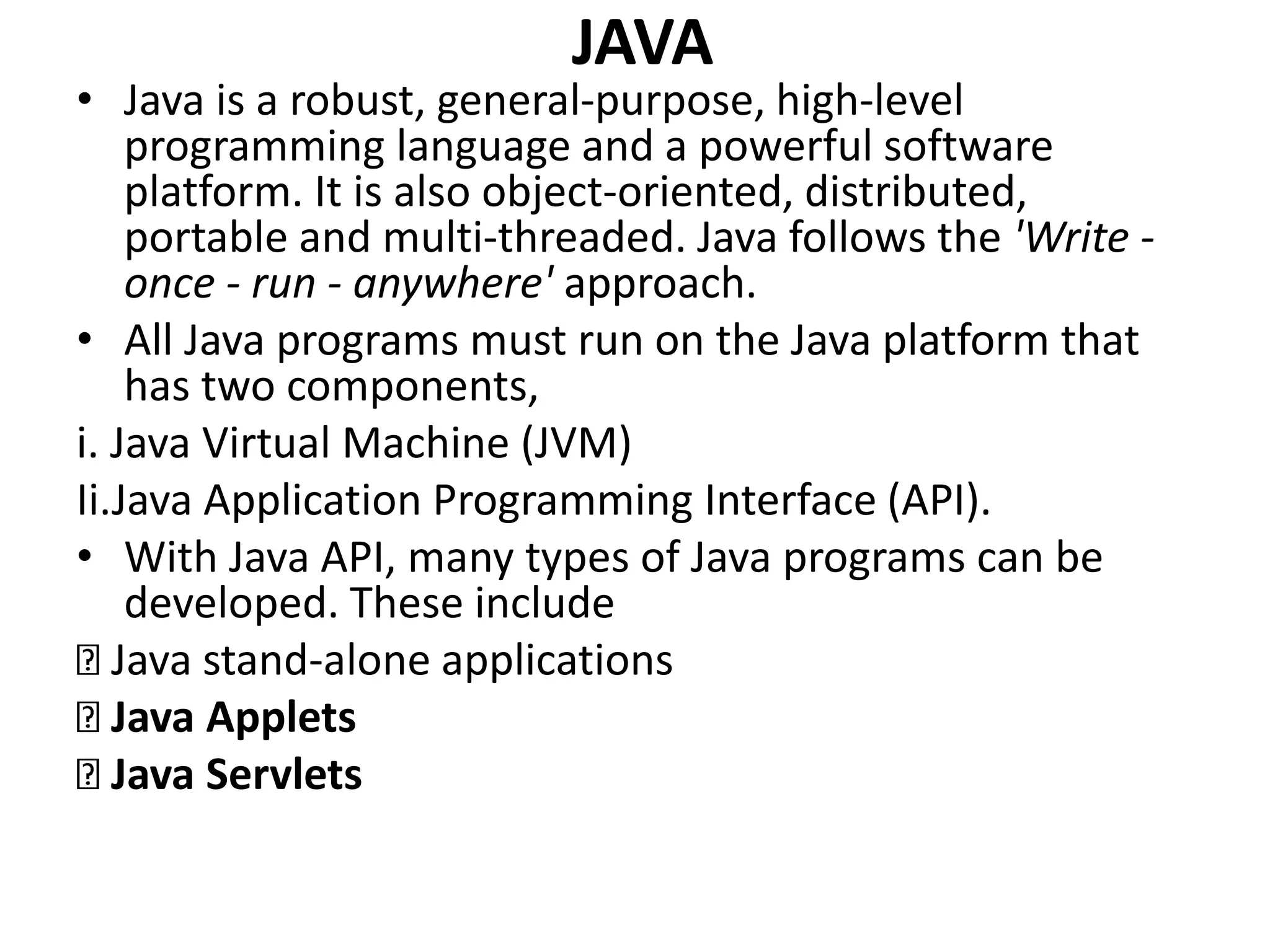
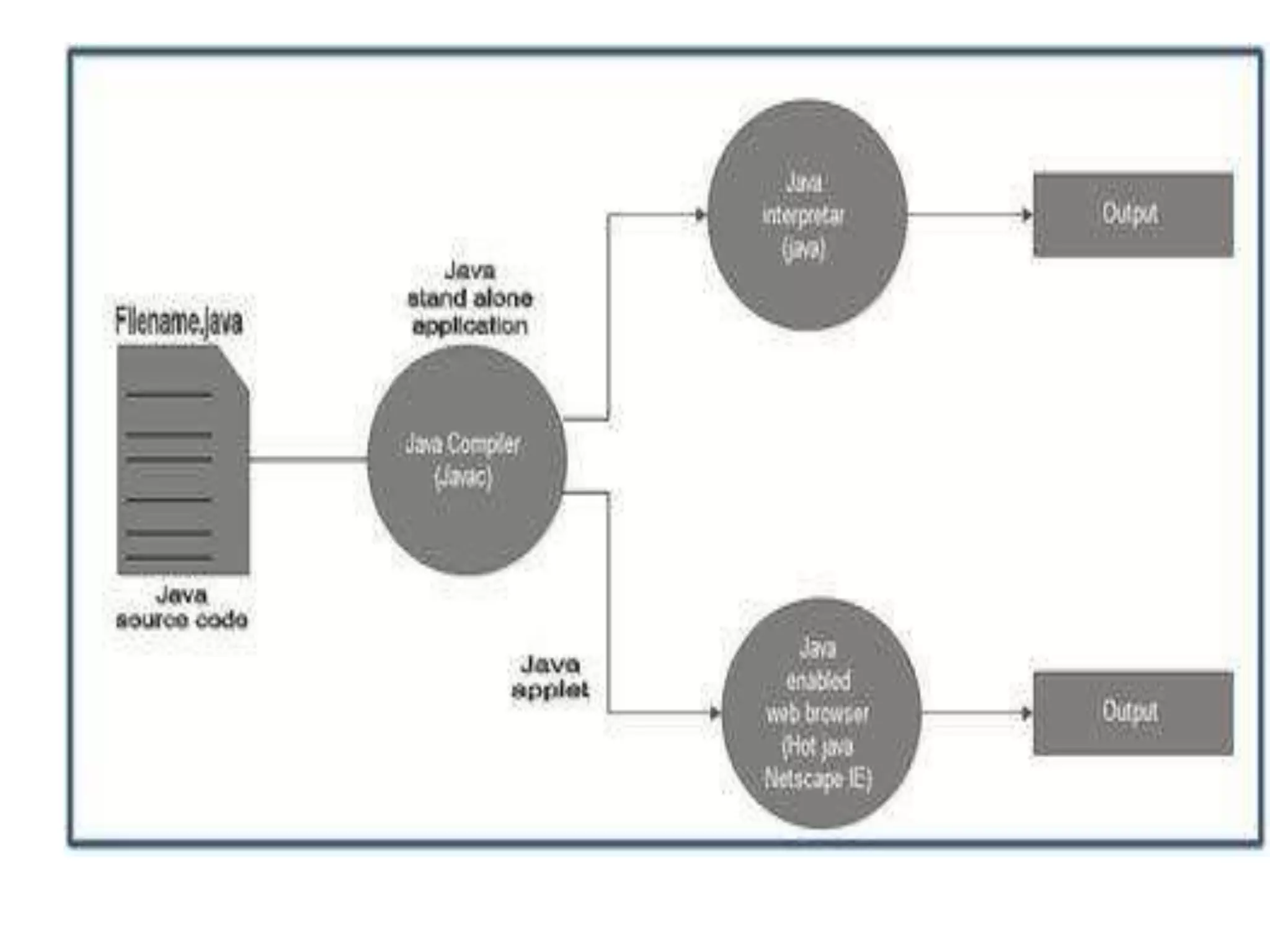
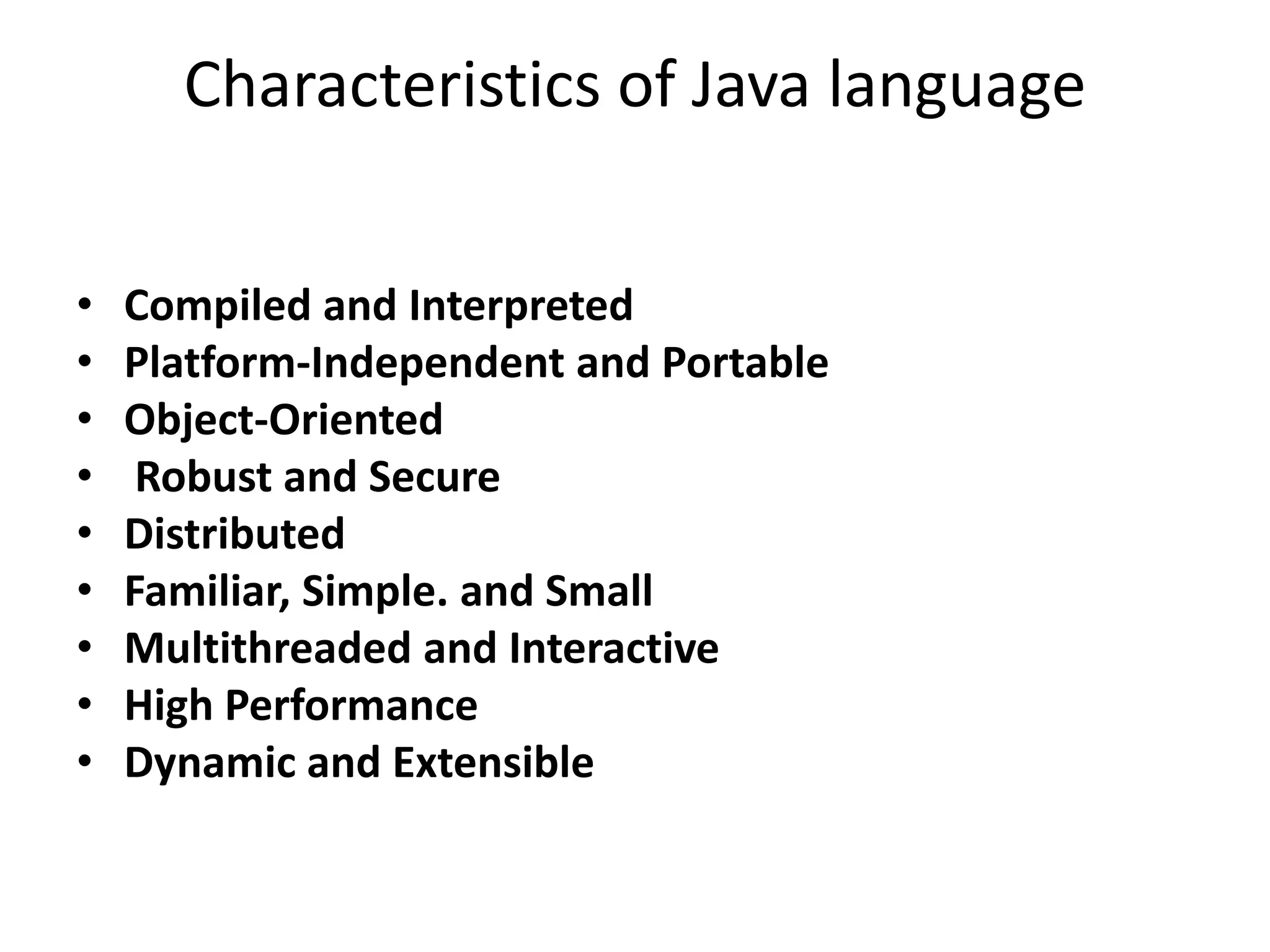

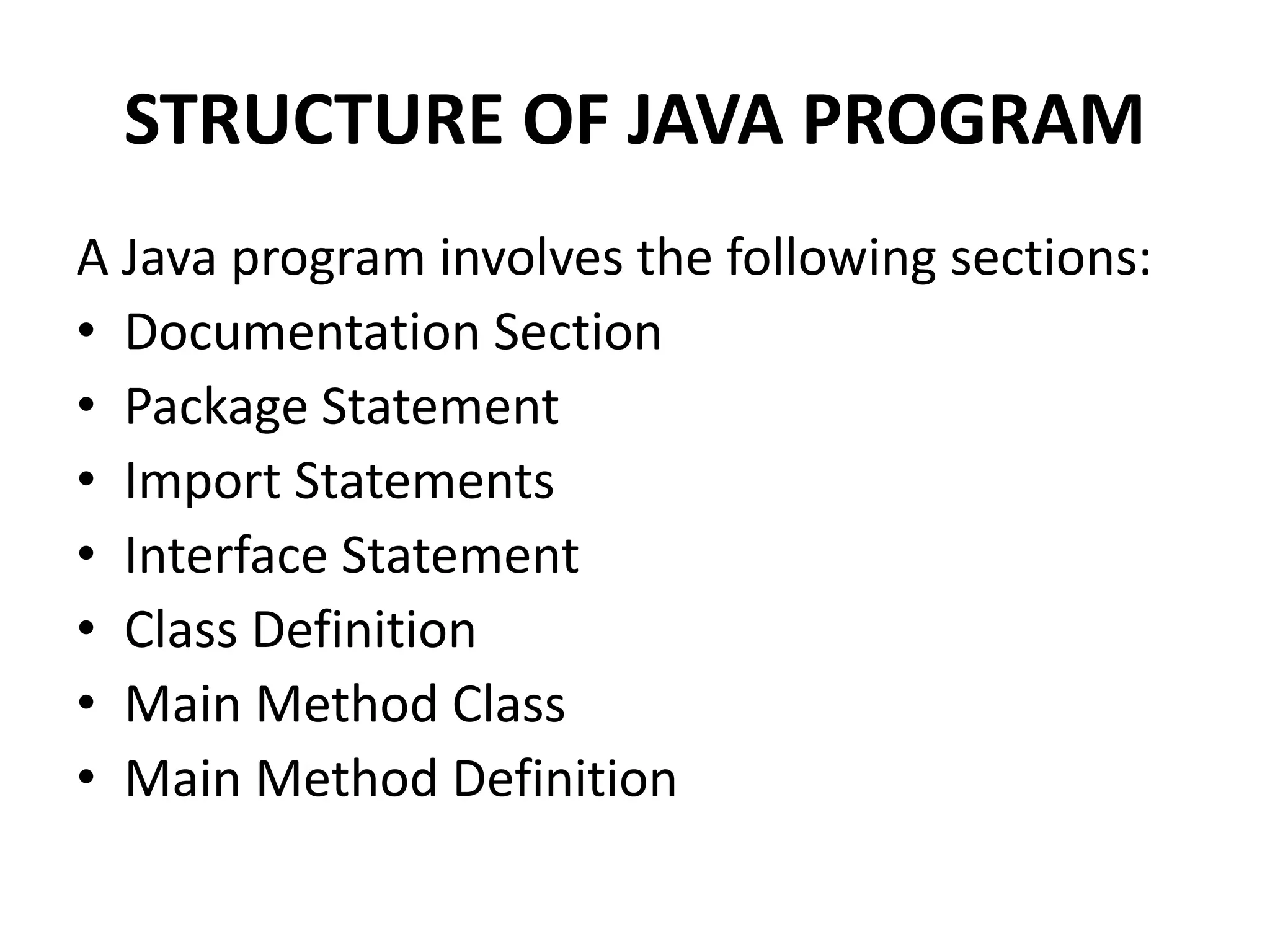
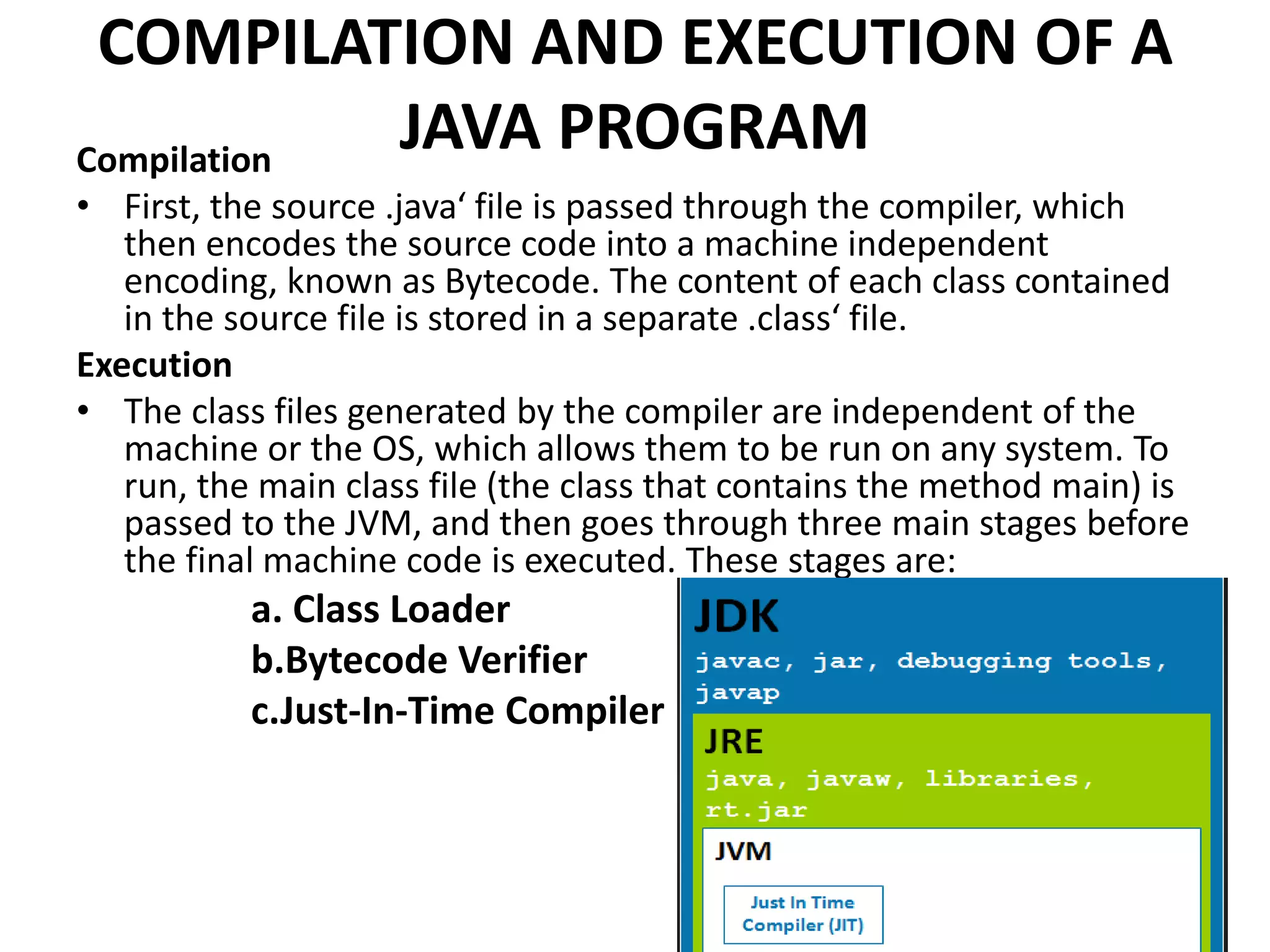
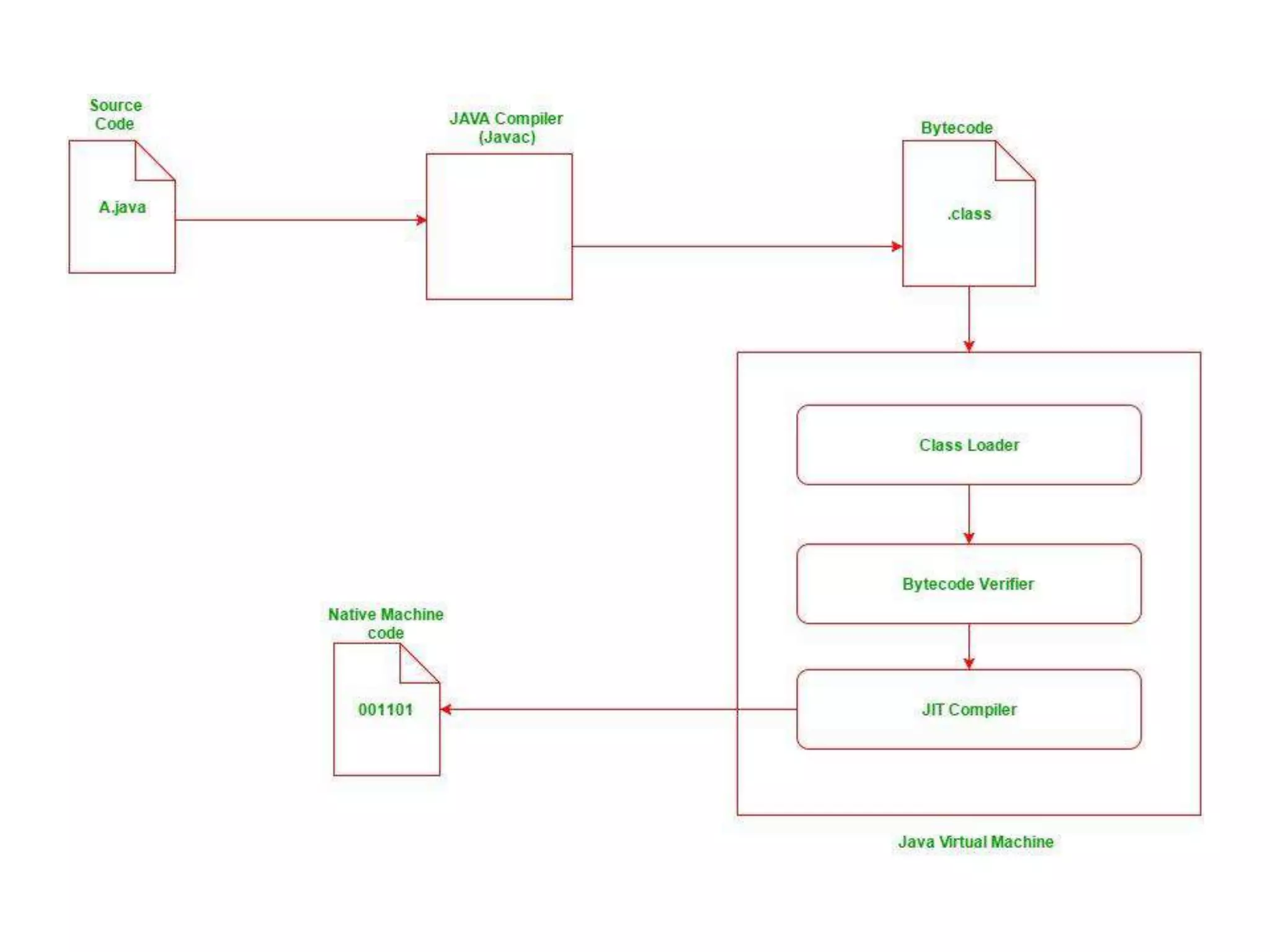
![FUNDAMENTAL PROGRAMMING
STRUCTURES IN JAVA
• COMMENTS
– System.out.println("Hello, World!"); // comment
– /* and */
– /** to start and a */ to end
public class JavaApplication1
{
public static void main(String[] args)
{
System.out.println("welcome");
}
}](https://image.slidesharecdn.com/introductiontooopandjavafundamentals-200219065007/75/Introduction-to-oop-and-java-fundamentals-31-2048.jpg)
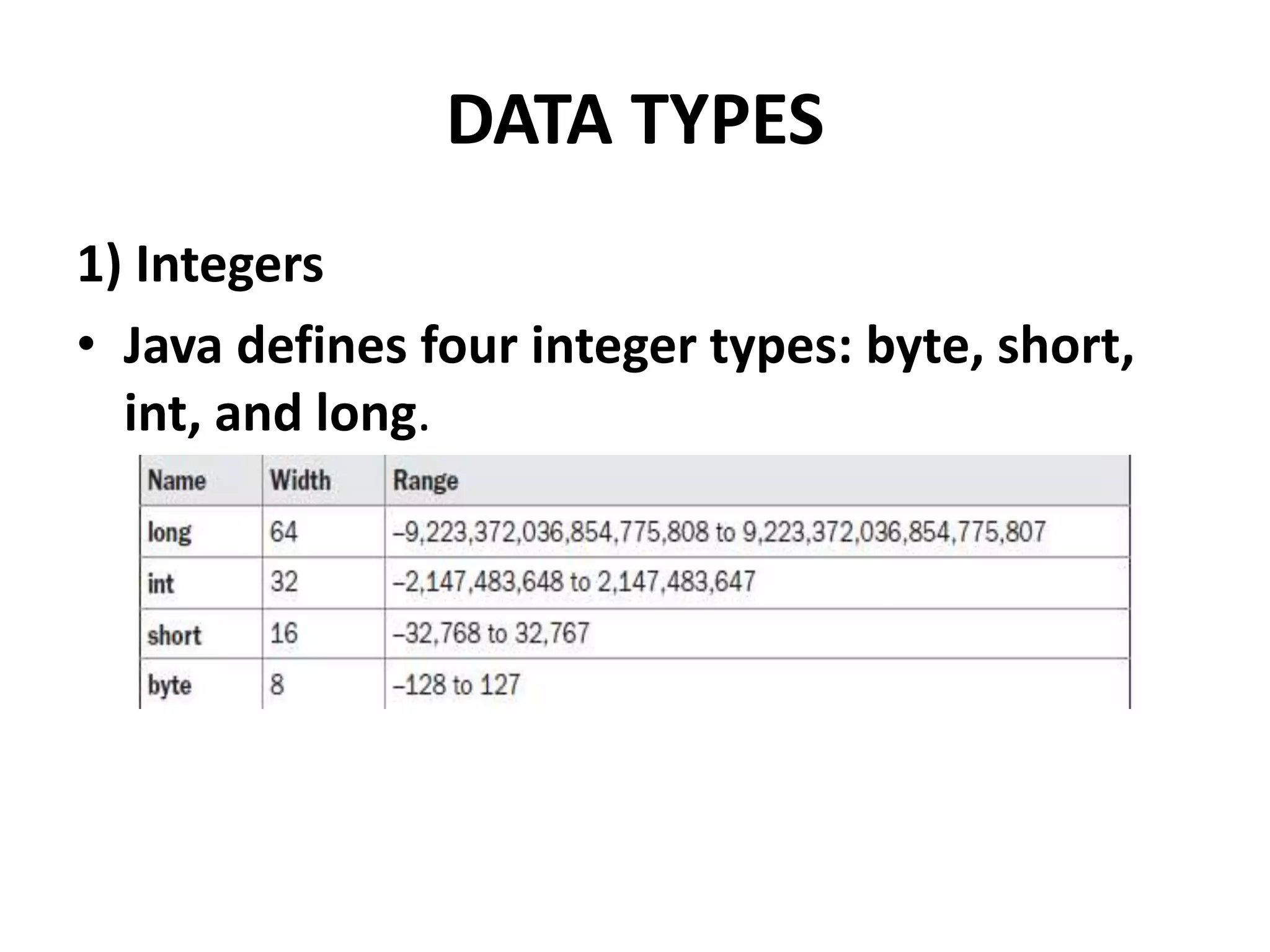
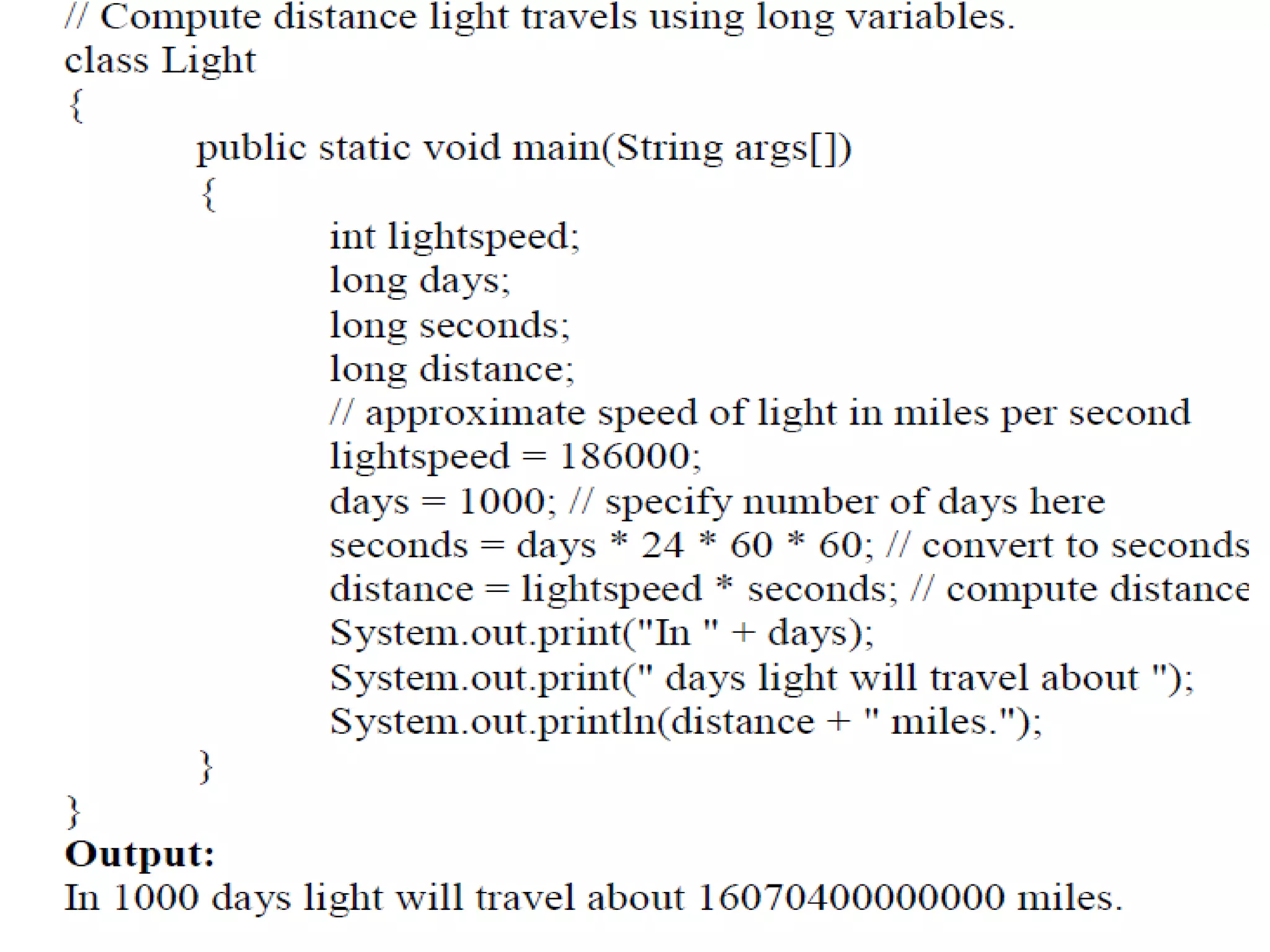
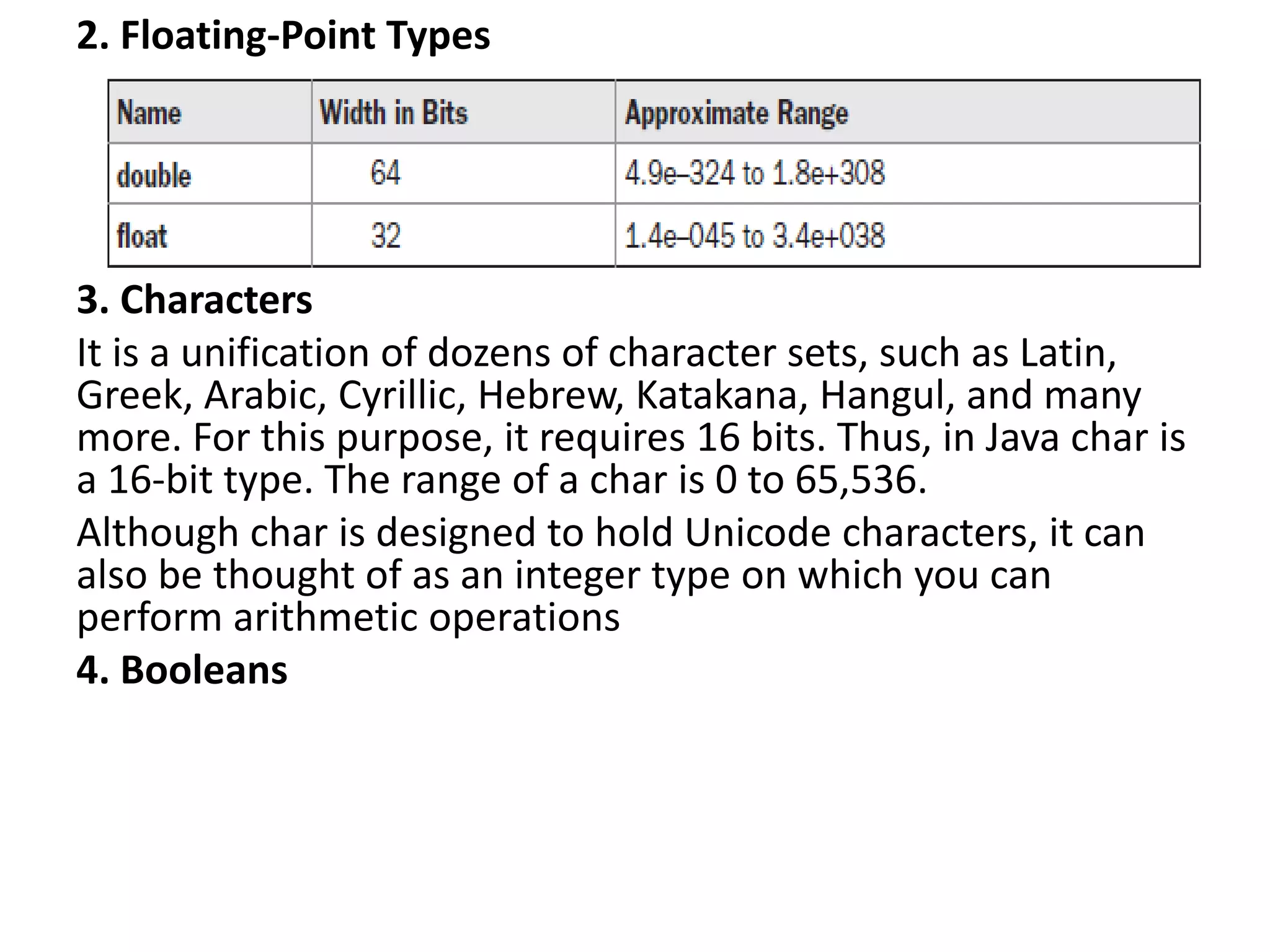
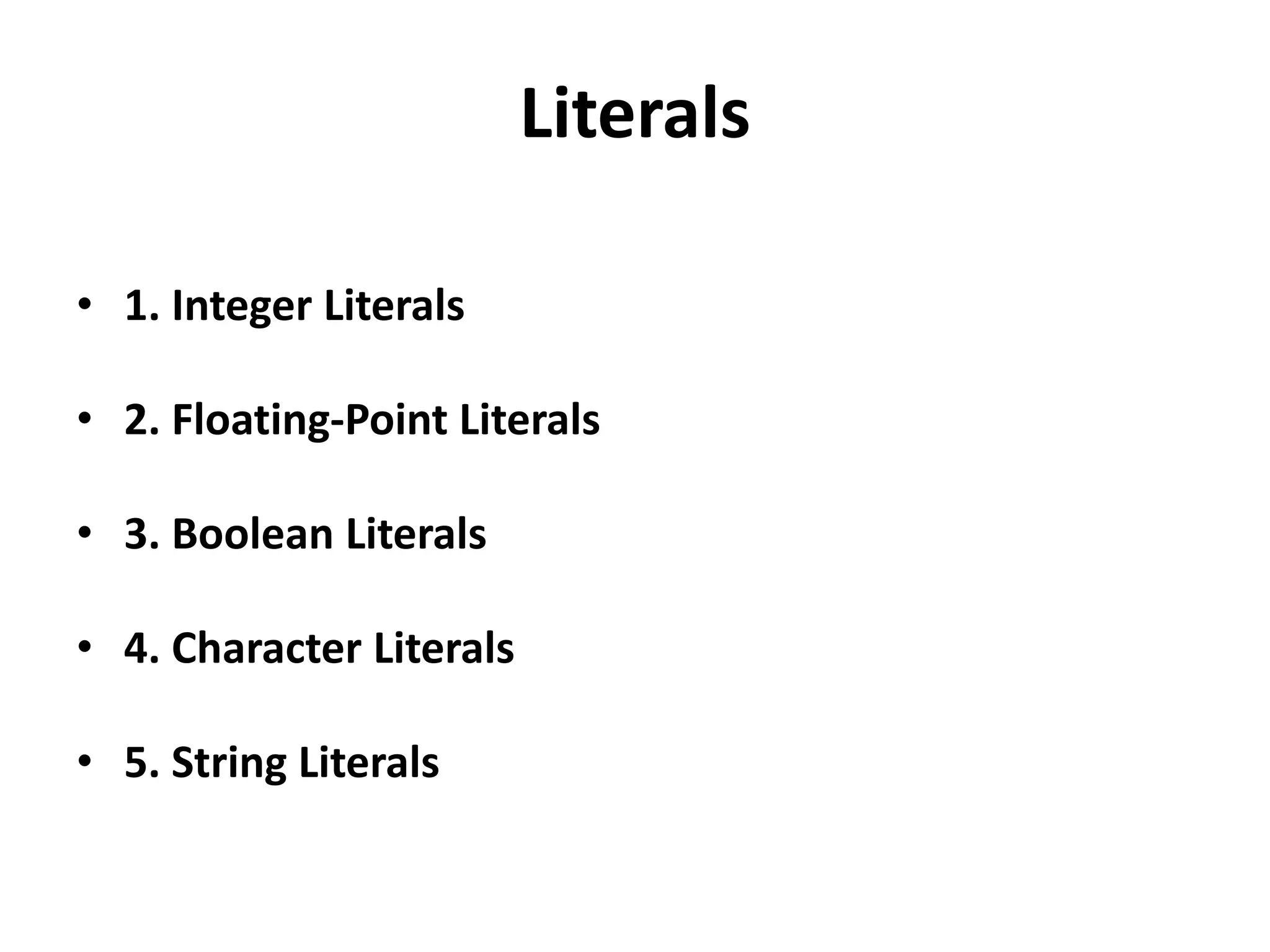
![VARIABLES• The variable is the basic unit of storage in a Java program.
• Declaring a Variable
type identifier [ = value][, identifier [= value] ...] ;
• int a, b, c; // declares three ints, a, b, and c.
• int d = 3, e, f = 5; // declares three more ints, initializing // d and f.
Dynamic Initialization:
double c = Math.sqrt(a * a + b * b);
The Scope and Lifetime of Variables
There are two general categories of scopes:
• global and
• local
Type Conversion and Casting -int value to a long variable
Casting Incompatible Types
int a;
byte b;
// ...
b = (byte) a;](https://image.slidesharecdn.com/introductiontooopandjavafundamentals-200219065007/75/Introduction-to-oop-and-java-fundamentals-36-2048.jpg)
